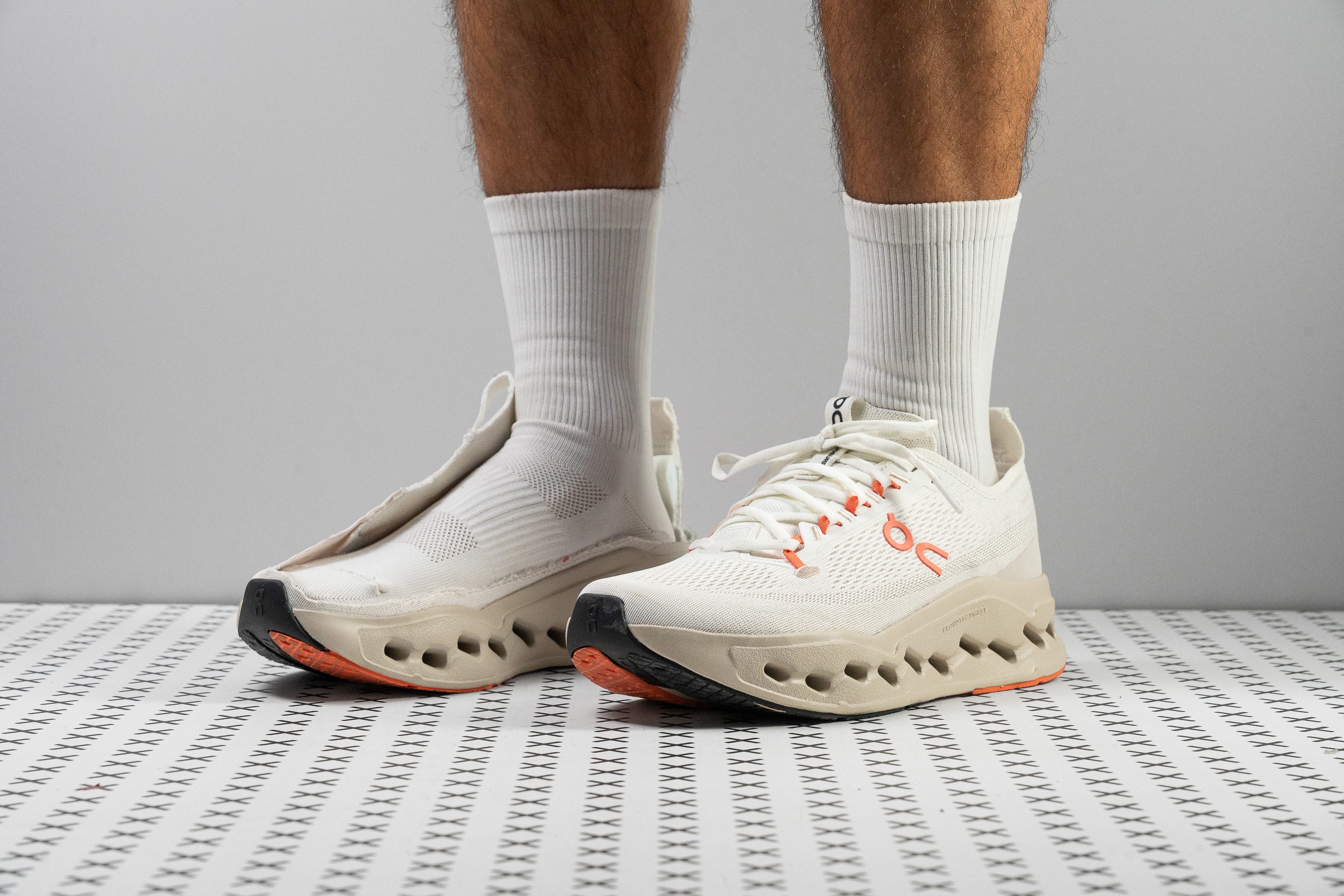Our verdict
Pros
- Performs well on long runs
- Versatile for daily wear
- Reliable traction
- Durable outsole with improved coverage
- Ideal for midfoot strikers
- Premium build quality
- Secure and stable fit
- Moderate rocker for a natural ride
Cons
- Very low energy return
- Feels heavy
- Expensive for its poor performance
- Limited breathability
Audience verdict
- Top 2% in road running shoes
- Top 5% in On running shoes
- Top 28% most popular running shoes
Comparison
The most similar running shoes compared
+ + Add a shoe | |||||
|---|---|---|---|---|---|
| Audience score | 93 Superb! | 89 Great! | 83 Good! | 82 Good! | |
| Price | £170 | £170 | £130 | £70 | |
| Pace | Daily running | Daily running | Daily running | Daily running | |
| Arch support | Neutral | Neutral | Neutral | Neutral | |
| Weight lab Weight brand | 10.3 oz / 292g 10.3 oz / 292g | 10.3 oz / 292g 10.4 oz / 295g | 9.9 oz / 281g 10.1 oz / 286g | 10.2 oz / 288g 9.2 oz / 260g | |
| Drop lab Drop brand | 7.9 mm 6.0 mm | 6.6 mm 6.0 mm | 9.3 mm 10.0 mm | 9.4 mm 10.0 mm | |
| Strike pattern | Mid/forefoot | Mid/forefoot | HeelMid/forefoot | HeelMid/forefoot | |
| Size | - | Slightly large | Half size large | True to size | |
| Midsole softness | Balanced | Balanced | Soft | Balanced | |
| Difference in midsole softness in cold | Normal | Small | Normal | Small | |
| Toebox durability | Decent | Good | Good | Decent | |
| Heel padding durability | Decent | Decent | Bad | Decent | |
| Outsole durability | Decent | Good | Good | Good | |
| Breathability | Warm | Warm | Warm | Warm | |
| Width / fit | Medium | Wide | Medium | Narrow | |
| Toebox width | Medium | Medium | Narrow | Narrow | |
| Stiffness | Stiff | Stiff | Moderate | Moderate | |
| Torsional rigidity | Moderate | Moderate | Stiff | Moderate | |
| Heel counter stiffness | Moderate | Moderate | Moderate | Moderate | |
| Rocker | ✗ | ✓ | ✗ | ✗ | |
| Heel lab Heel brand | 37.3 mm 37.0 mm | 37.9 mm 35.0 mm | 37.1 mm 39.0 mm | 36.1 mm 36.0 mm | |
| Forefoot lab Forefoot brand | 29.4 mm 31.0 mm | 31.3 mm 29.0 mm | 27.8 mm 29.0 mm | 26.7 mm 26.0 mm | |
| Widths available | NormalWide | Normal | Normal | NormalWide | |
| Orthotic friendly | ✓ | ✓ | ✓ | ✓ | |
| Season | All seasons | All seasons | All seasons | All seasons | |
| Removable insole | ✓ | ✓ | ✓ | ✓ | |
| Ranking | #6 Top 2% | #100 Top 28% | #254 Bottom 30% | #282 Bottom 23% | |
| Popularity | #103 Top 28% | #41 Top 12% | #248 Bottom 32% | #138 Top 38% |
Who should buy
We believe the On Cloudsurfer Max could be a great choice for:
- Runners who love the Cloudsurfer series and want extra cushioning underfoot.
- Those seeking a stylish, versatile shoe that transitions easily from long runs to daily wear.
- Midfoot strikers that give priority to a comfort-focused upper made with premium materials.
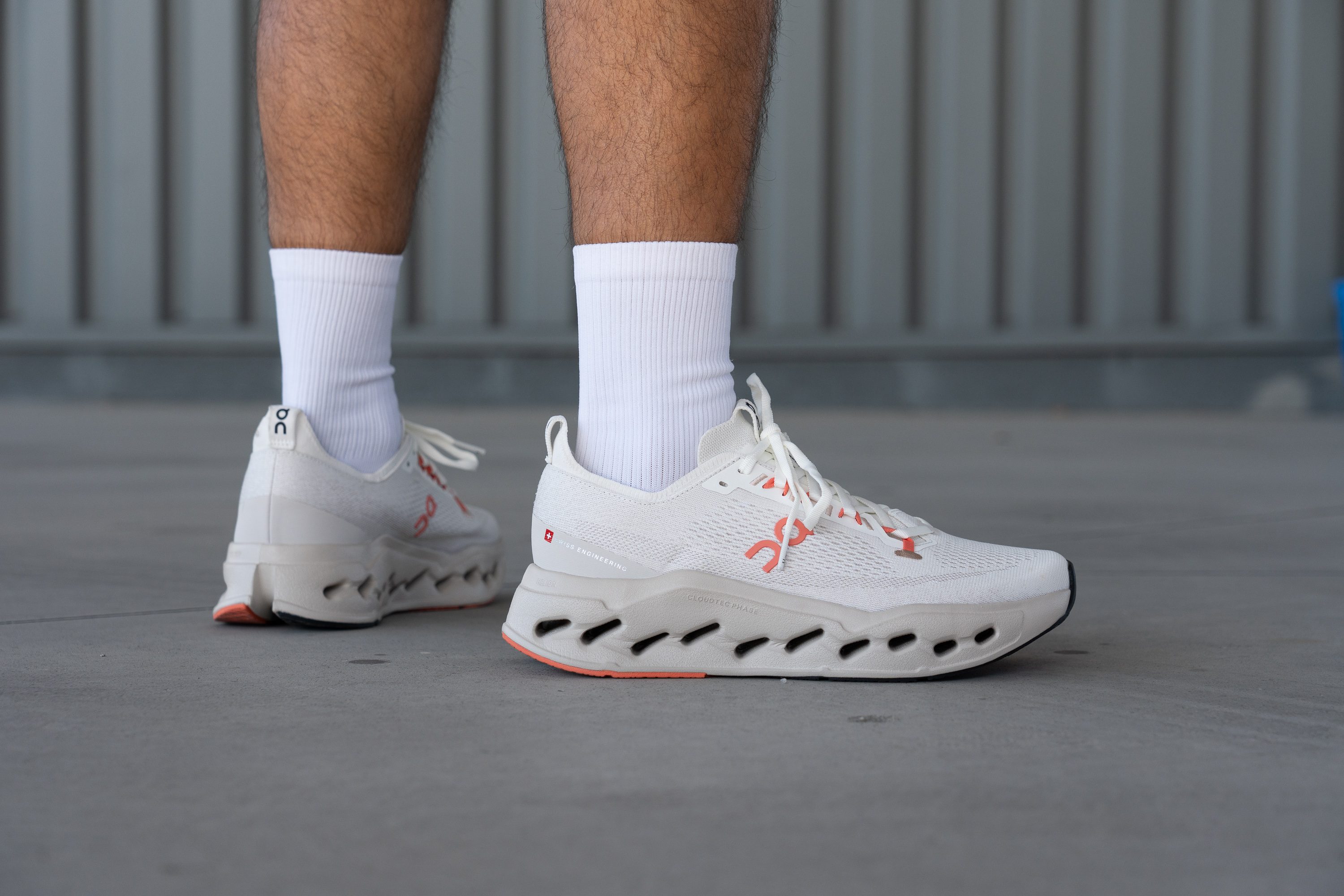
Who should NOT buy
We think the Cloudsurfer Max is not the best choice for runners expecting performance. On’s own website describes it as featuring “Helion™ superfoam,” but we found in the lab that this statement is far from real. In fact, the energy return was among the lowest we’ve ever measured at this price. For a more responsive ride at a premium price, we recommend the Nike Vomero Plus or the ASICS Megablast instead.
We also believe that, despite carrying the "Max" name, this shoe doesn’t meet current max-stack standards. According to our measurements, the midsole falls short of the heel stack many expect from this category. If you want a truly maximalist feel, the ASICS Sonicblast or the Mizuno Neo Vista 2 are far better options.
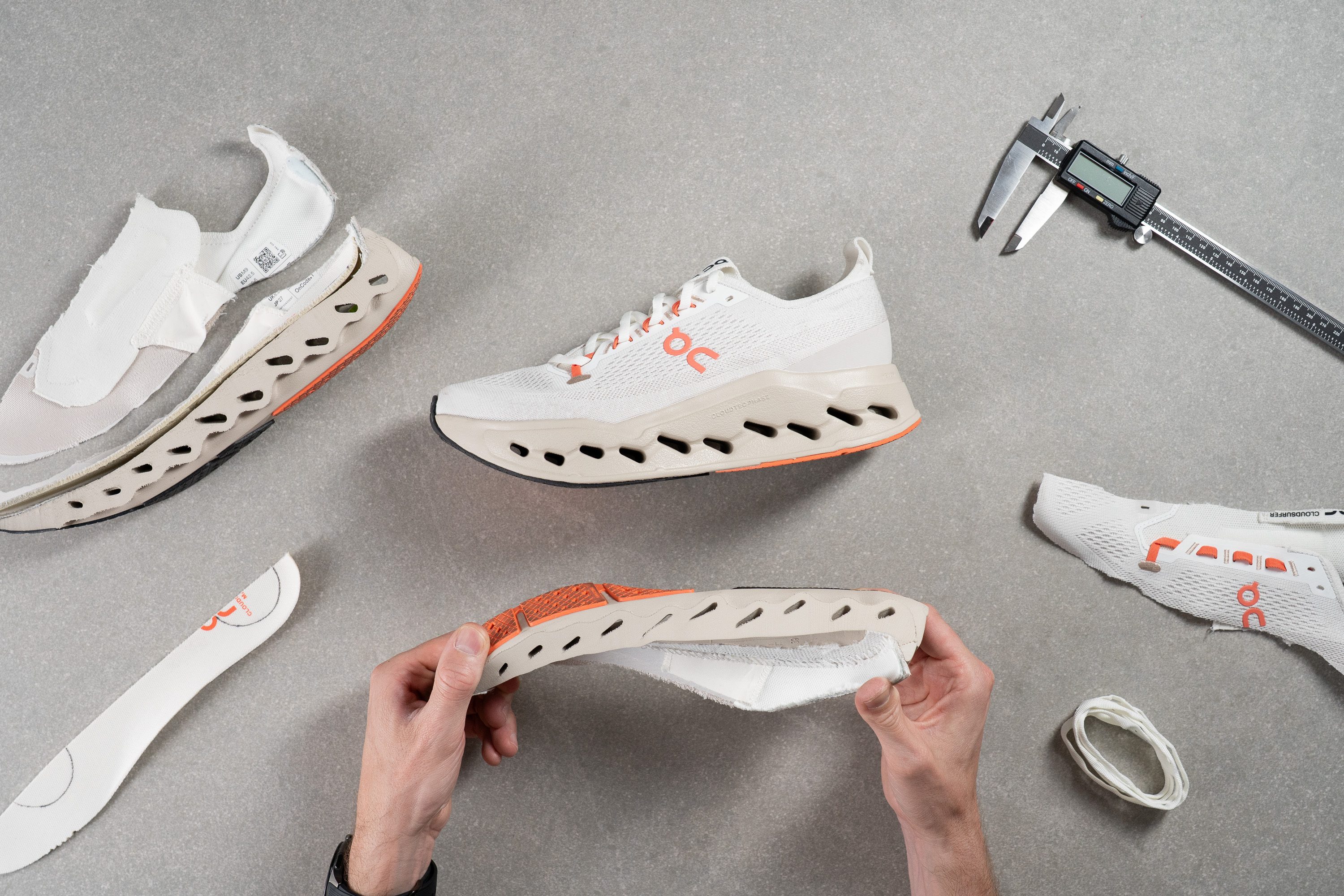
Cushioning
Shock absorption
The Max version of the Cloudsurfer 2 adds only a slight boost in heel cushioning, as we measured 141 SA compared to 137 SA in the non-Max model. However, the forefoot shows a more noticeable improvement, jumping from 100 SA to 120 SA, and that truly changes the underfoot feel.
Because of this, heel strikers may prefer the regular version, which remains both lighter and more affordable.
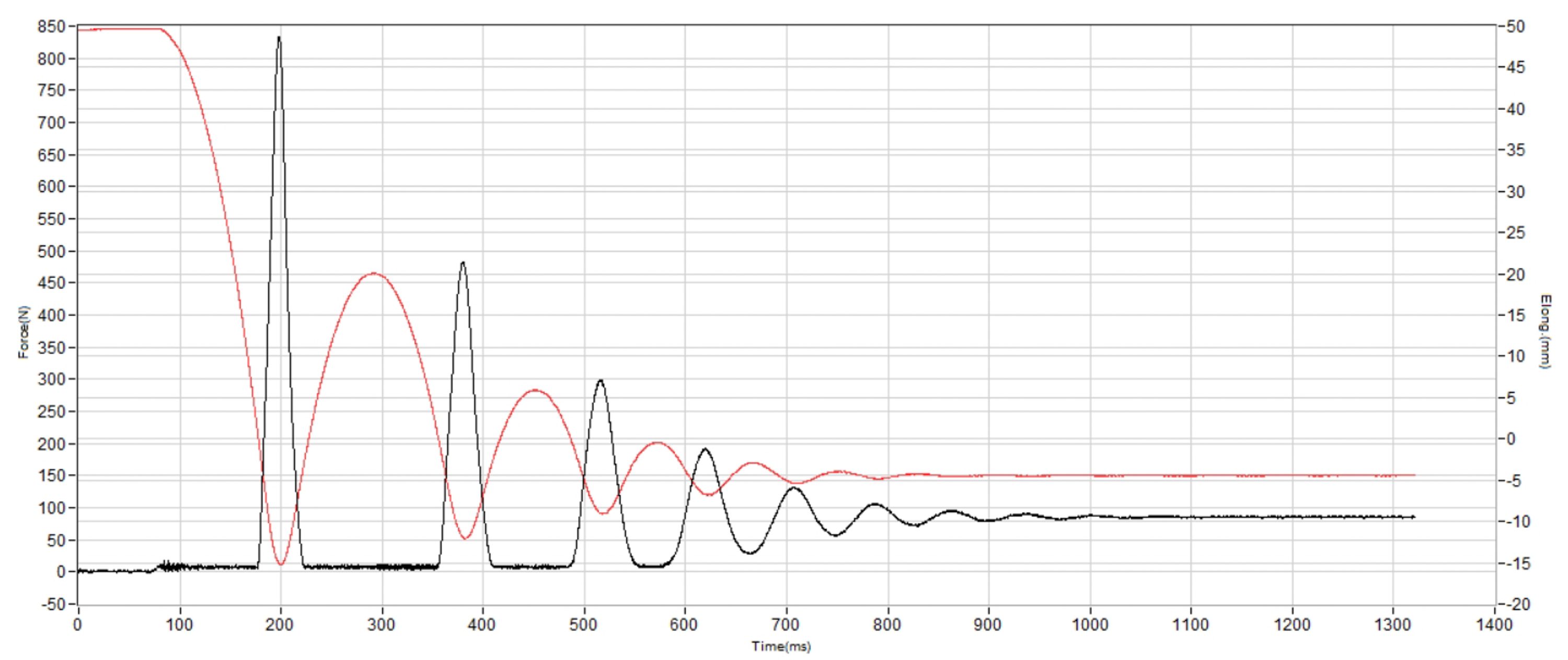
| Cloudsurfer Max | 141 SA |
| Average | 129 SA |
Energy return
We’d love to say that the Cloudsurfer Max offers good energy return. Unfortunately, we can’t say that. In our lab test, we found only 48.3% rebound in the heel and 49.4% in the forefoot, making it one of the weakest performers we’ve ever measured when comparing bounce to price.
We believe that it’s time to move toward a better foam for everyday training, as the EVA-based Helion is definitely outdated. And sure, it's clear that On has achieved amazing progress in the last years and they've built a strong global presence, but for serious runners, this result is deeply disappointing.
| Cloudsurfer Max | 48.3% |
| Average | 58.6% |
Heel stack
The heel measures 37.3 mm, which isn’t super high. It’s slightly above average, but for a so-called "Max" shoe, we expected at least 40 mm, and that’s not the case with the Cloudsurfer Max.
We found that the ride still feels deeply cushioned and long-run-ready, though not as plush as true maximalist models. Still, this setup could appeal to runners seeking a more natural-feeling ride while having enough protection.
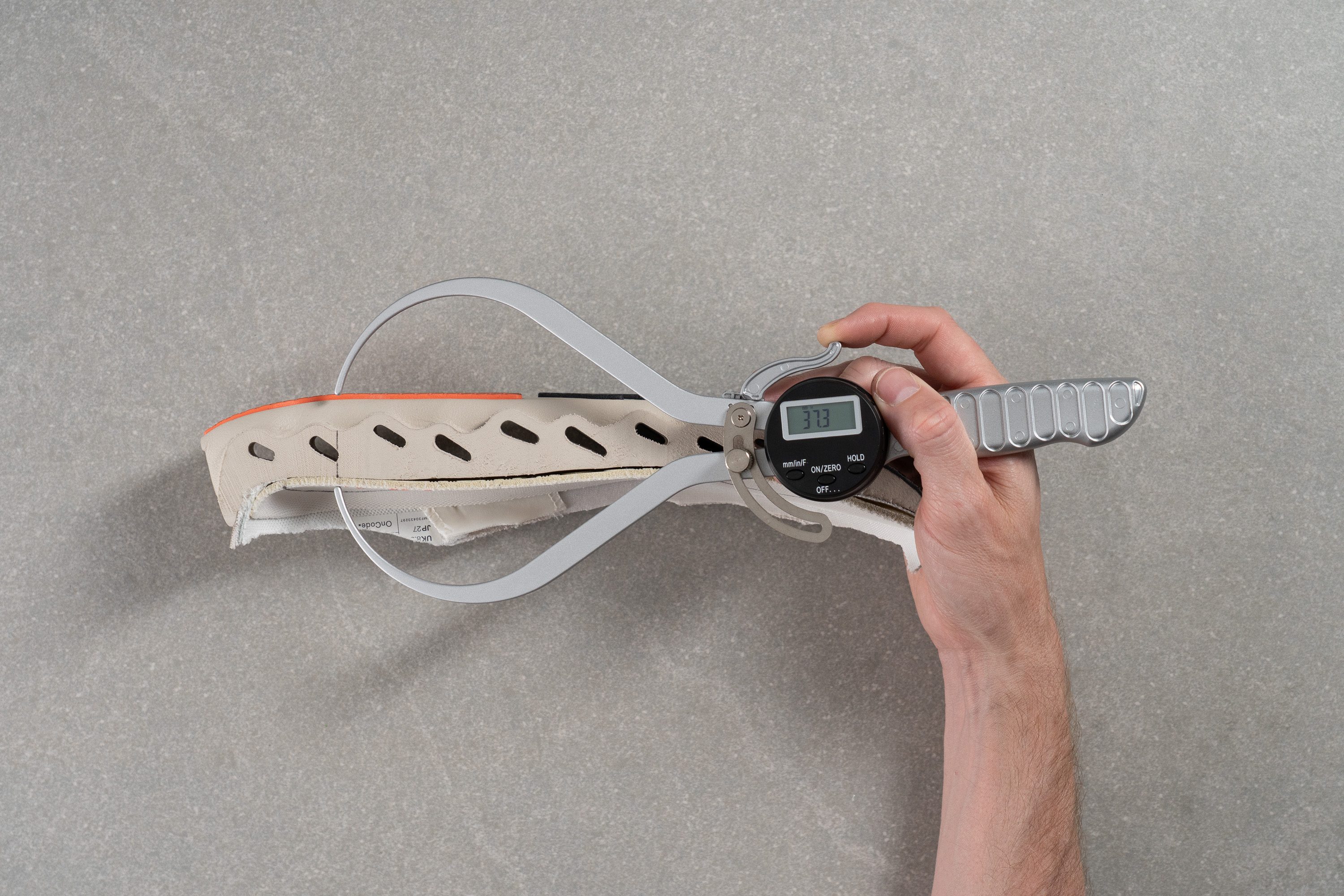
| Cloudsurfer Max | 37.3 mm |
| Average | 34.8 mm |
Forefoot stack
The forefoot comes close to the 30 mm mark, and we’d say this shoe feels somewhat half-maximalist. For heel strikers, definitely not, but compared to the regular version, we discovered a taller and more cushioned forefoot.
Even so, it’s not even the highest-stack On model. The Cloudmonster 2 actually reaches 31.3 mm up front, and who knows, maybe a Cloudmonster Max is already in the pipeline!
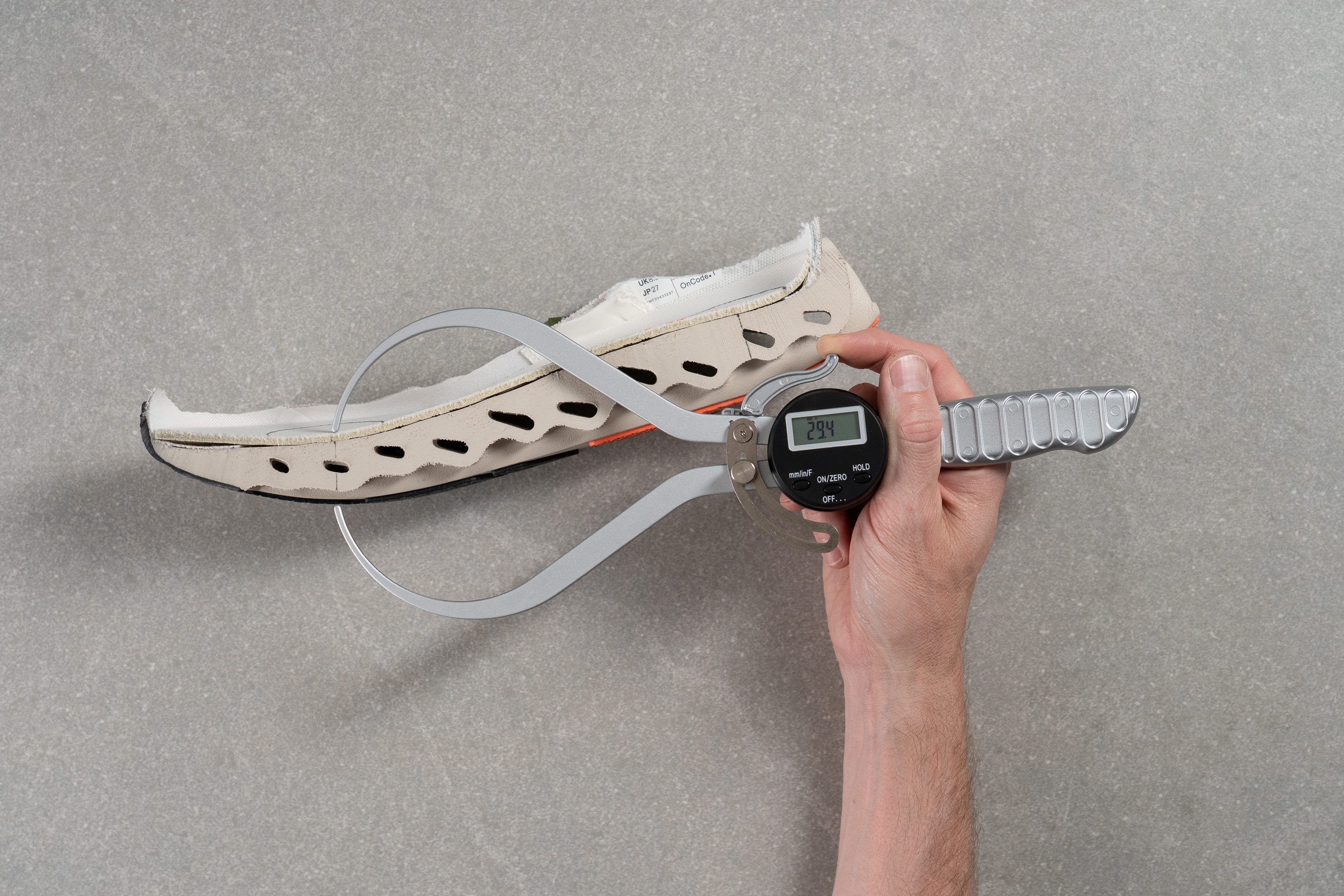
| Cloudsurfer Max | 29.4 mm |
| Average | 26.1 mm |
Drop
We noticed a small difference in the drop numbers, but nothing concerning. On claims 6 mm, but we measured an actual heel-to-toe drop of 7.9 mm. This slight variation is barely noticeable underfoot, though it may feel a bit more comfortable for heel strikers.
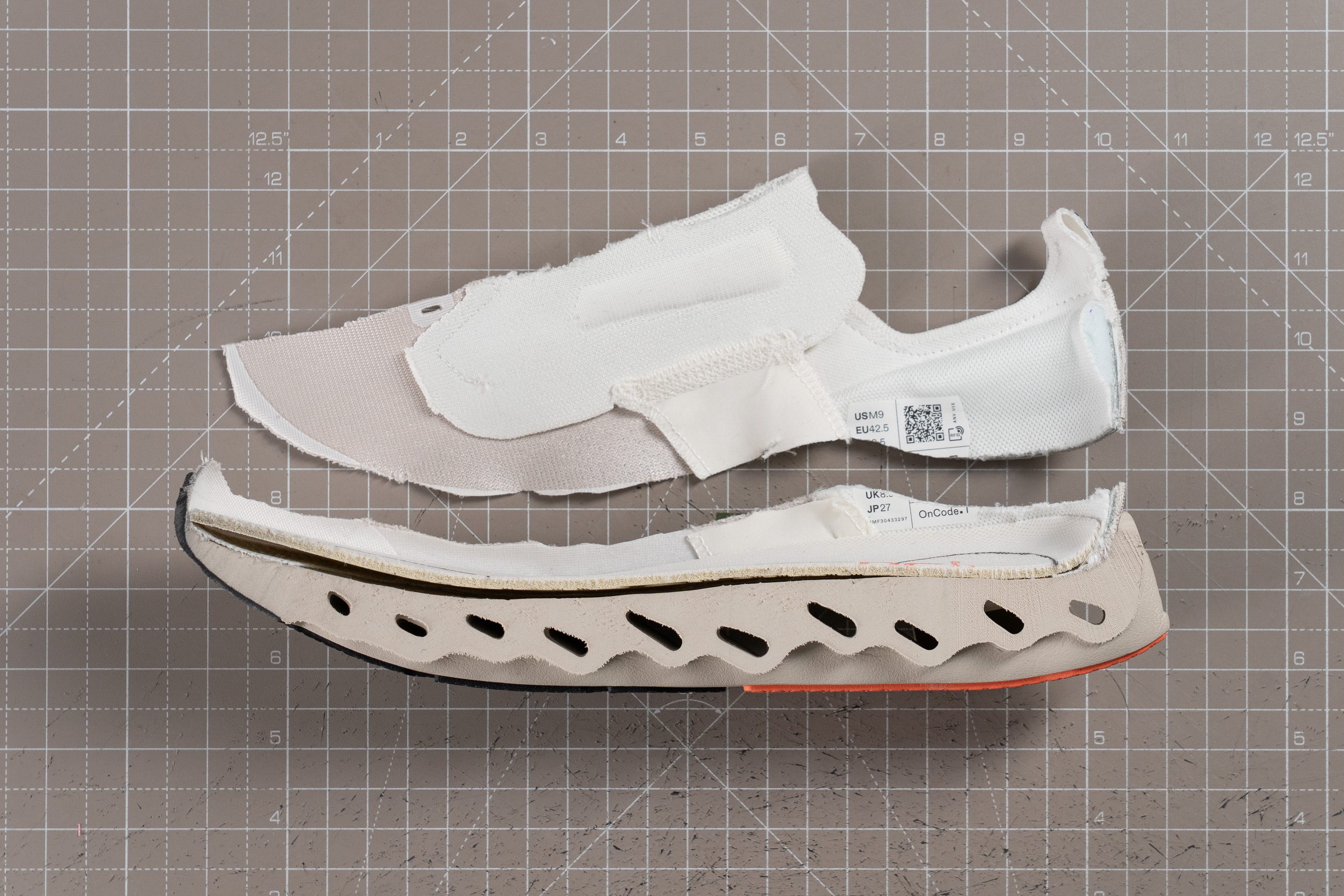
| Cloudsurfer Max | 7.9 mm |
| Average | 8.6 mm |
Midsole softness
Those familiar with On running shoes already know they rarely feel plush, although we discovered that the CloudTec Phase system adds a slightly softer, more cushioned sensation than the durometer suggests thanks to the pod compression.
The issue is that new On users may expect an ultra-plush feel based on the midsole’s appearance, but that’s far from reality. We measured 21.9 HA, which is firmer than our lab average.
Still, it’s refreshing to see brands like On deliver distinct ride experiences, especially when most others are chasing softer-underfoot sensations, a trend we’ve confirmed as our lab average continues to drop in midsole softness.
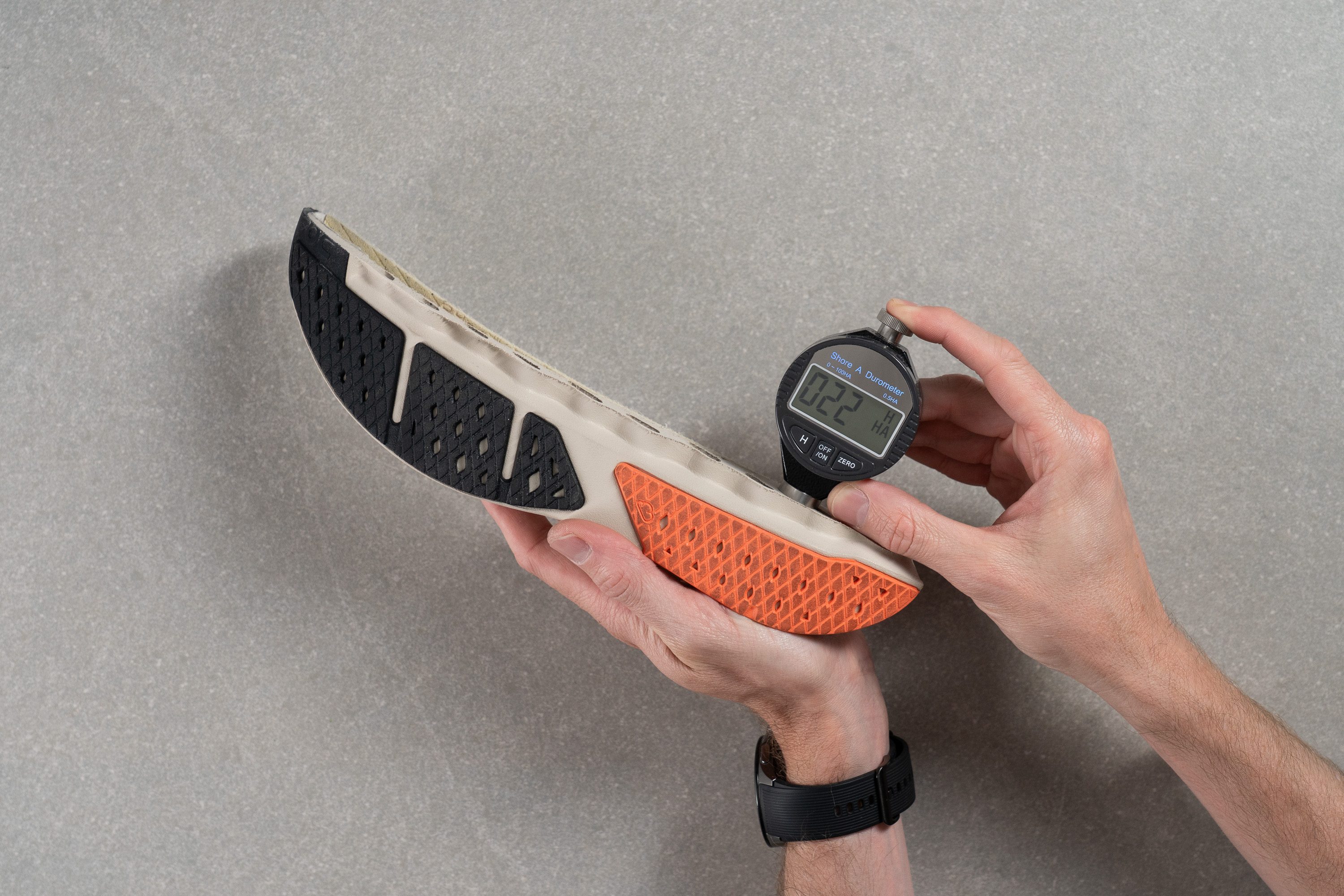
| Cloudsurfer Max | 21.9 HA |
| Average | 20.4 HA |
Rocker
Because the On Cloudsurfer Max isn’t as maximalist as other models, it performs well with a moderate rocker instead of a highly pronounced one—and that’s great news for runners who dislike overly rockered designs.
We were especially impressed by the low heel curvature, which, combined with the high midfoot sidewalls, made us believe this shoe works best for midfoot strikers.
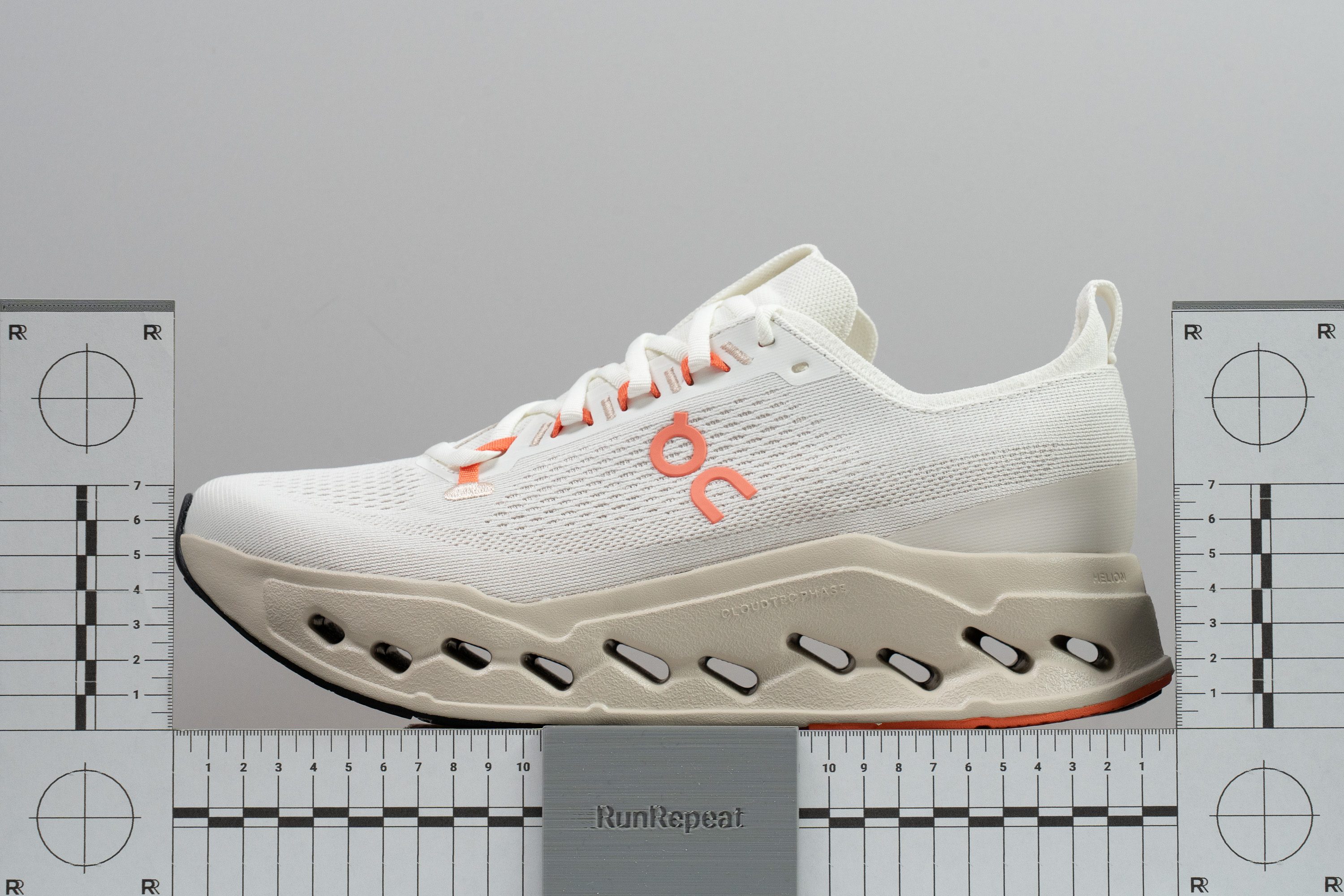
Size and fit
Size
Width / Fit
To analyse the fit of the Cloudsurfer Max, we created a gel mould of its interior, just as we do with every shoe we test in the lab.
The Cloudsurfer Max measured 96.1 mm in width, slightly roomier than average. This perfectly matched our first impressions, a fit that feels neither tight nor overly spacious.
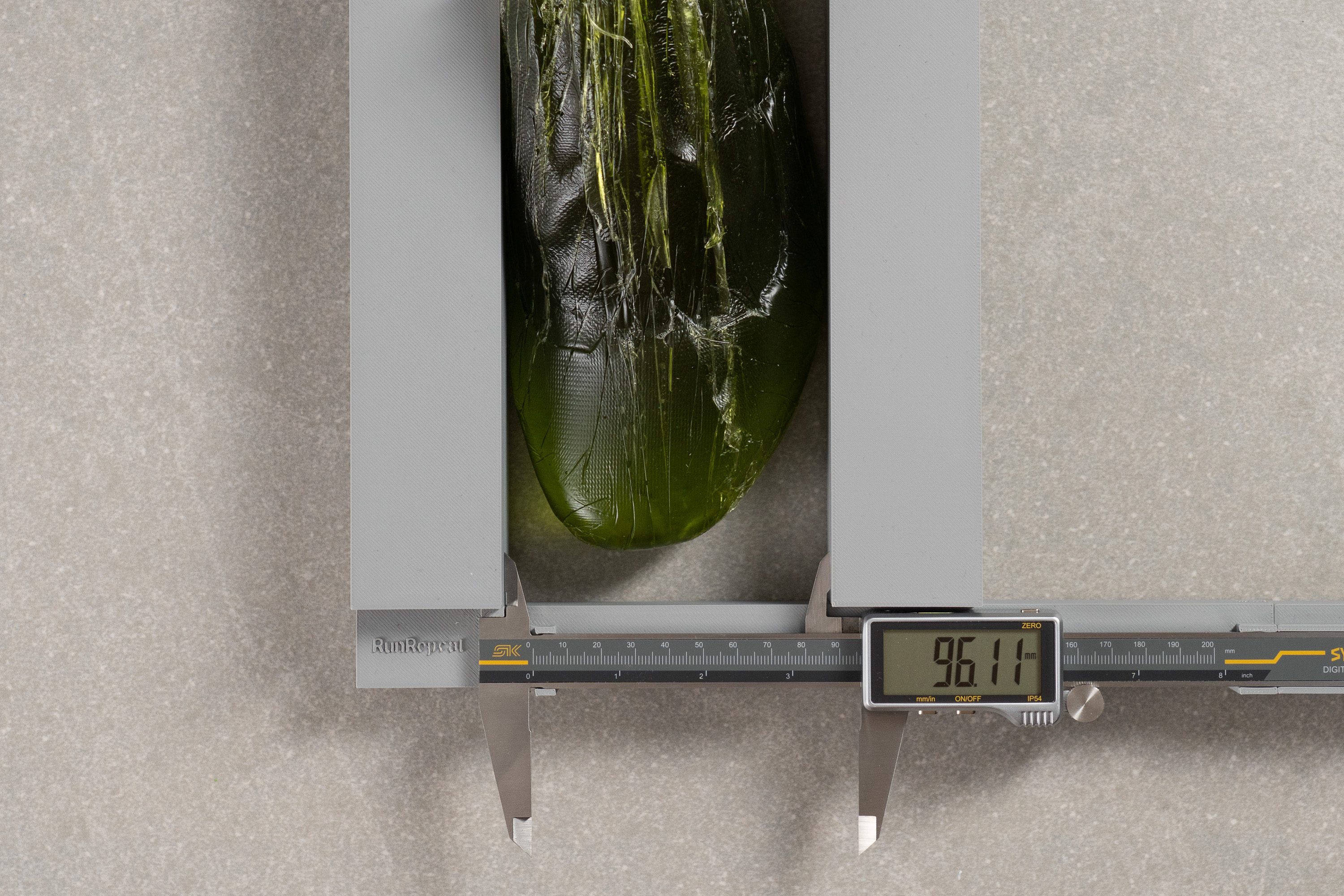
| Cloudsurfer Max | 96.1 mm |
| Average | 95.1 mm |
Toebox width
We then examined the gel mould to measure the toebox width, a key factor for runners concerned about toe splay. Here, space narrows to 71.4 mm, and the tapered shape may not accommodate every foot type comfortably.
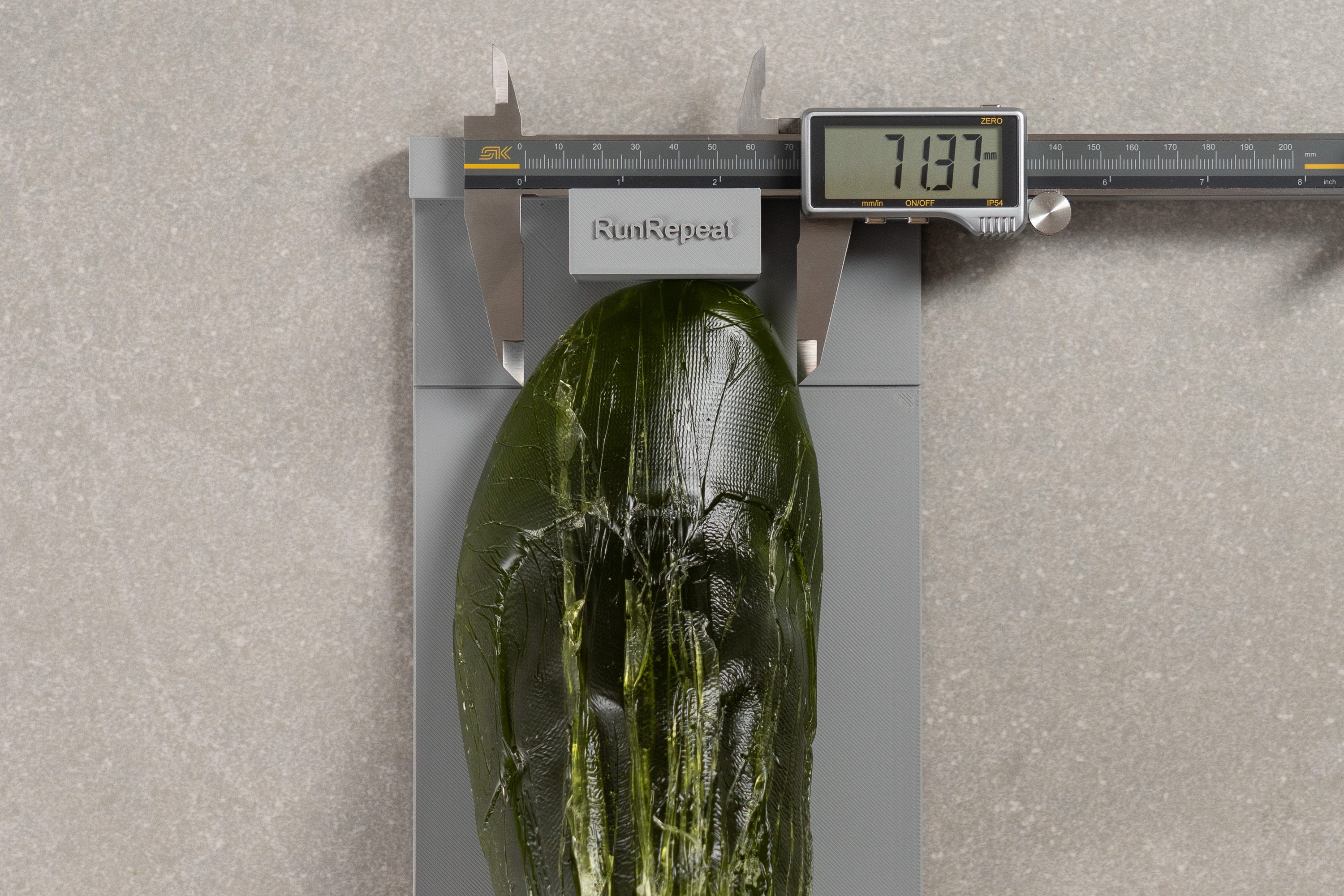
| Cloudsurfer Max | 71.4 mm |
| Average | 73.3 mm |
Toebox height
We encountered no issues with vertical toe clearance.
Our callipers measured 26.2 mm, providing ample room for a comfortable experience even during long-distance runs.
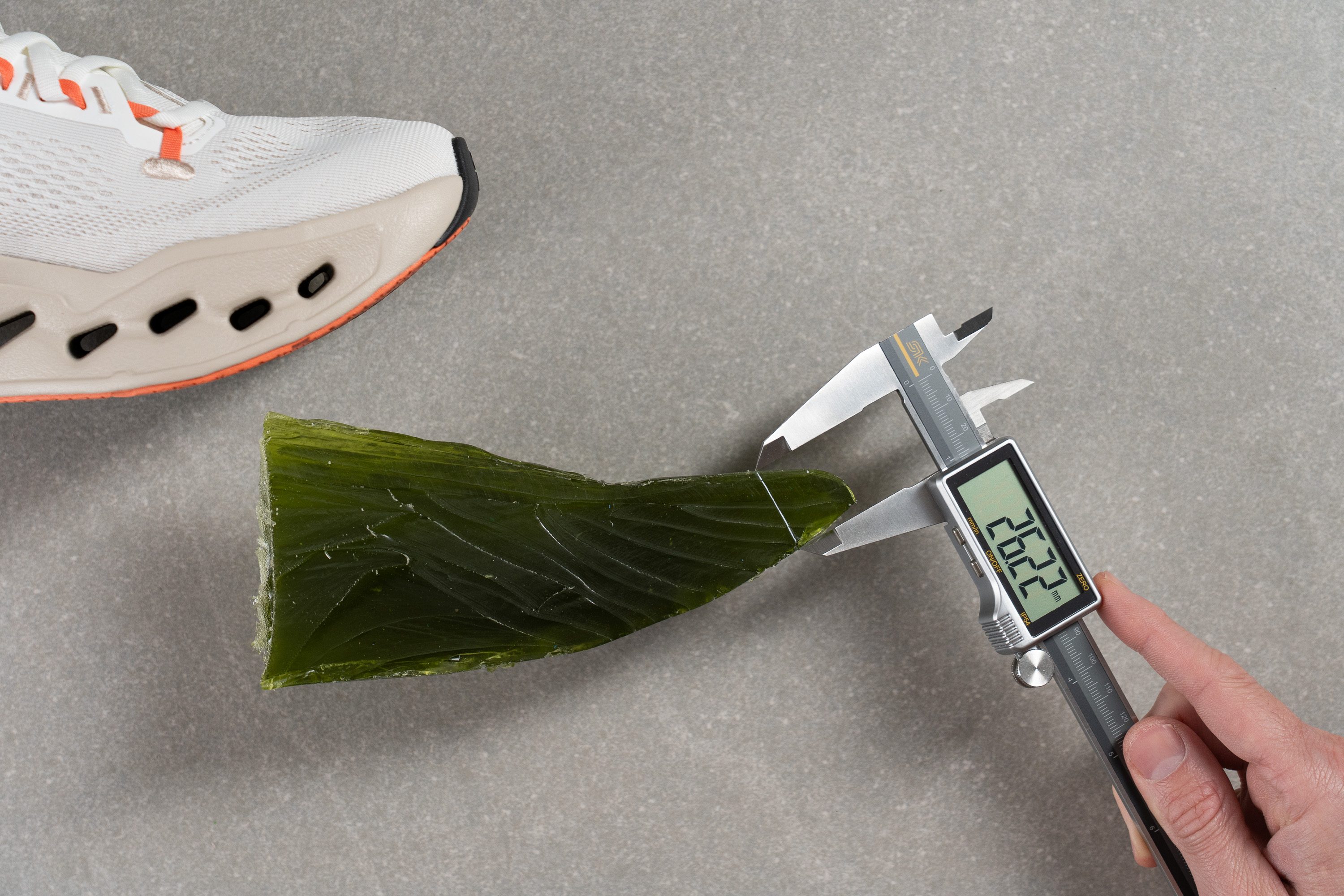
| Cloudsurfer Max | 26.2 mm |
| Average | 27.1 mm |
Traction / Grip
Traction test
We tested the Cloudsurfer Max using the SATRA TM144 method and recorded a 0.53 score in our lab, which is right in the ideal range for reliable traction on mixed surfaces.
Whether on dry pavement, wet concrete, or even dirt roads, this shoe definitely delivers solid grip.
| Cloudsurfer Max | 0.53 |
| Average | 0.48 |
Outsole design
The outsole combines orange and black rubber segments for balanced traction and durability, offering more complete coverage than many competitors. The forefoot cutouts improve flexibility and reduce weight, while the central hollow running from heel to toe further trims weight and softens torsional rigidity, enhancing comfort for daily runs.
However, runners planning to hit gravel roads should note that small stones can easily get trapped in the outsole.
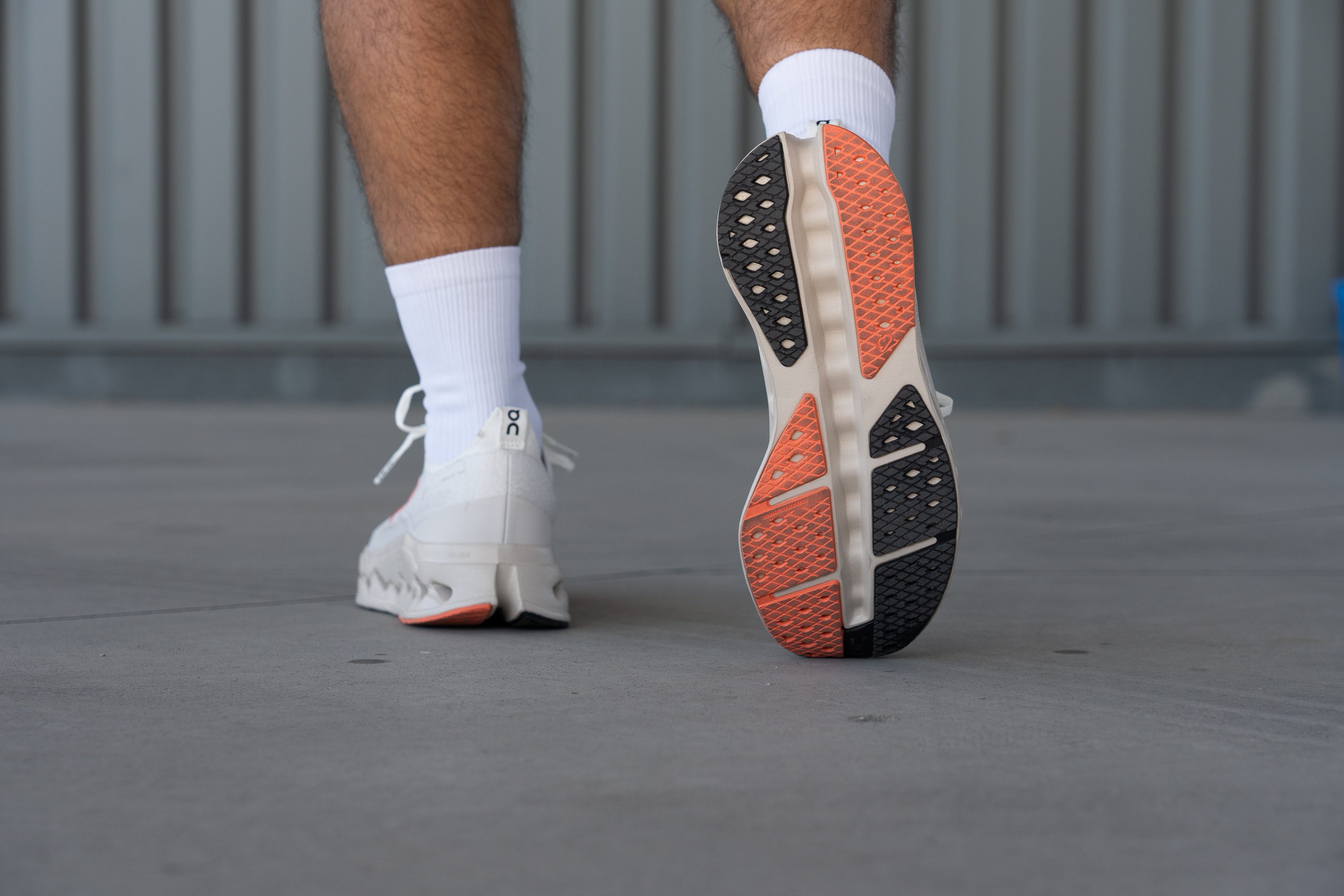
Flexibility / Stiffness
Despite the two large horizontal cutouts in the forefoot, the Cloudsurfer Max remains far from a flexible running shoe. In our 30-degree bend test, it required 18.2N of force, confirming its relatively stiff construction.
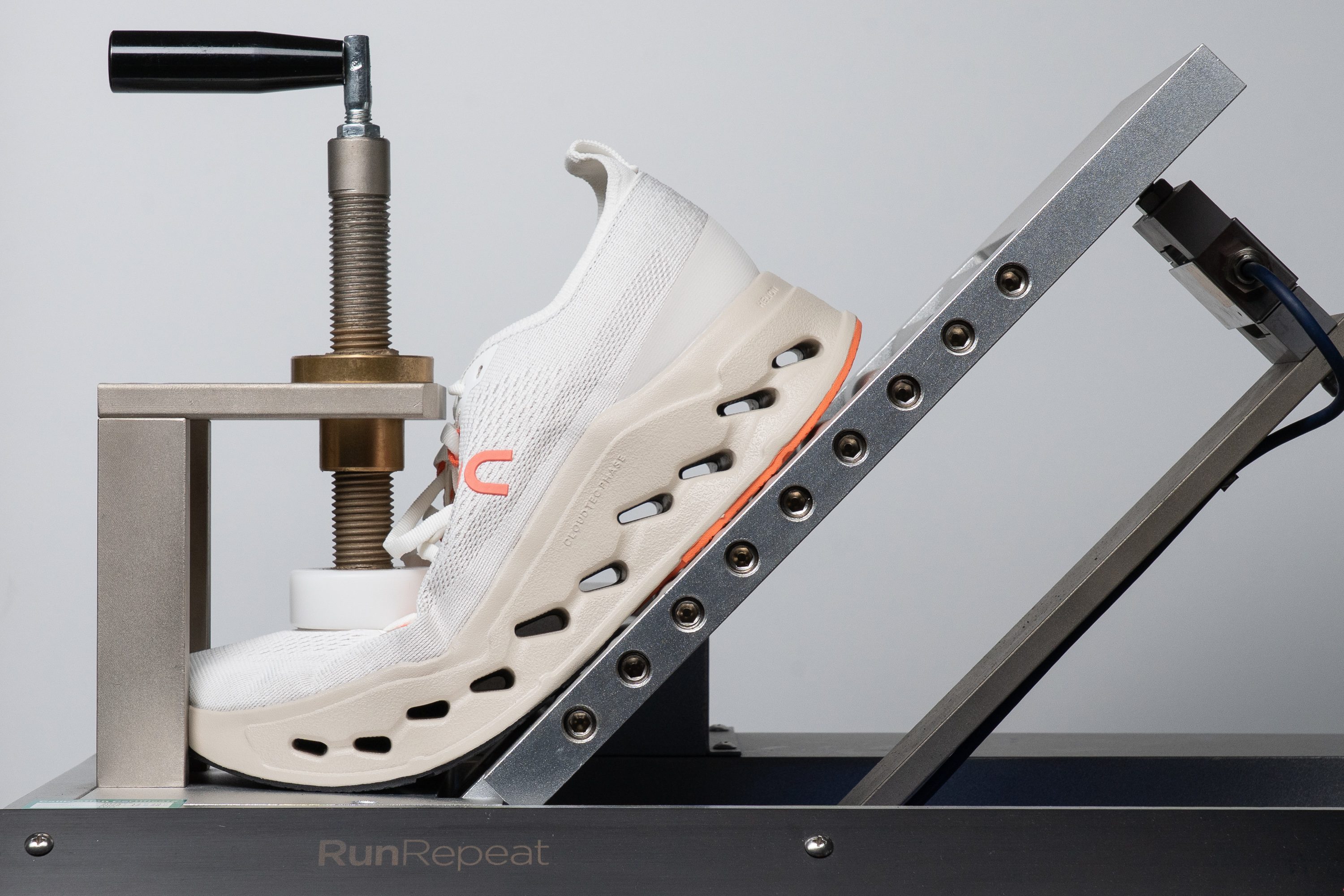
| Cloudsurfer Max | 18.2N |
| Average | 15.2N |
Weight
We discovered that this shoe feels quite heavy at 10.3 oz or 292g, something we clearly noticed during every run.
Combined with its low energy return, it becomes a poor option for those who crave a fast feel underfoot. Shoes with either a feather-light build or a high bounce usually compensate for the other, but that’s definitely not the case here. A good example is the Nike Pegasus Premium, which carries extra weight but delivers high energy return to make up for it.
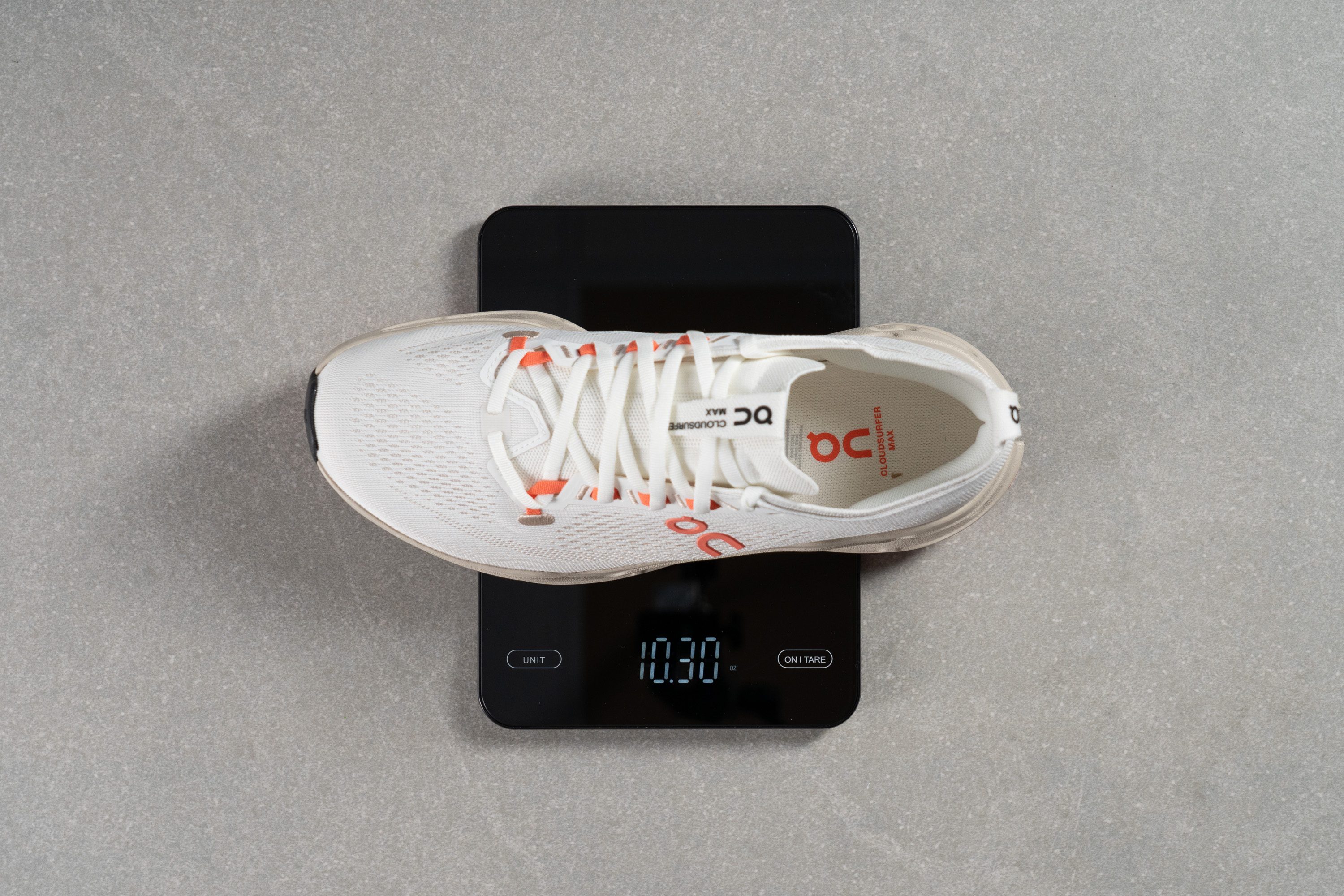
| Cloudsurfer Max | 10.3 oz (292g) |
| Average | 9.3 oz (265g) |
Breathability
After reviewing hundreds of shoes in our lab, we’ve learned that appearances can be misleading. That’s exactly the case with the Cloudsurfer Max, because its upper gives a high-ventilation impression, yet reality tells a very different story.
During our first test, we discovered that the shoe barely expelled any smoke. The airflow was noticeably restricted, and after careful evaluation, we assigned it a 2/5 score for breathability. Again, that's clearly below what the design suggests.
It’s disappointing because the upper looked promising during our light test, showing thinner zones that seemed airflow-ready at first glance. Unfortunately, once tested, the results proved otherwise, leaving us surprised by its poor performance.
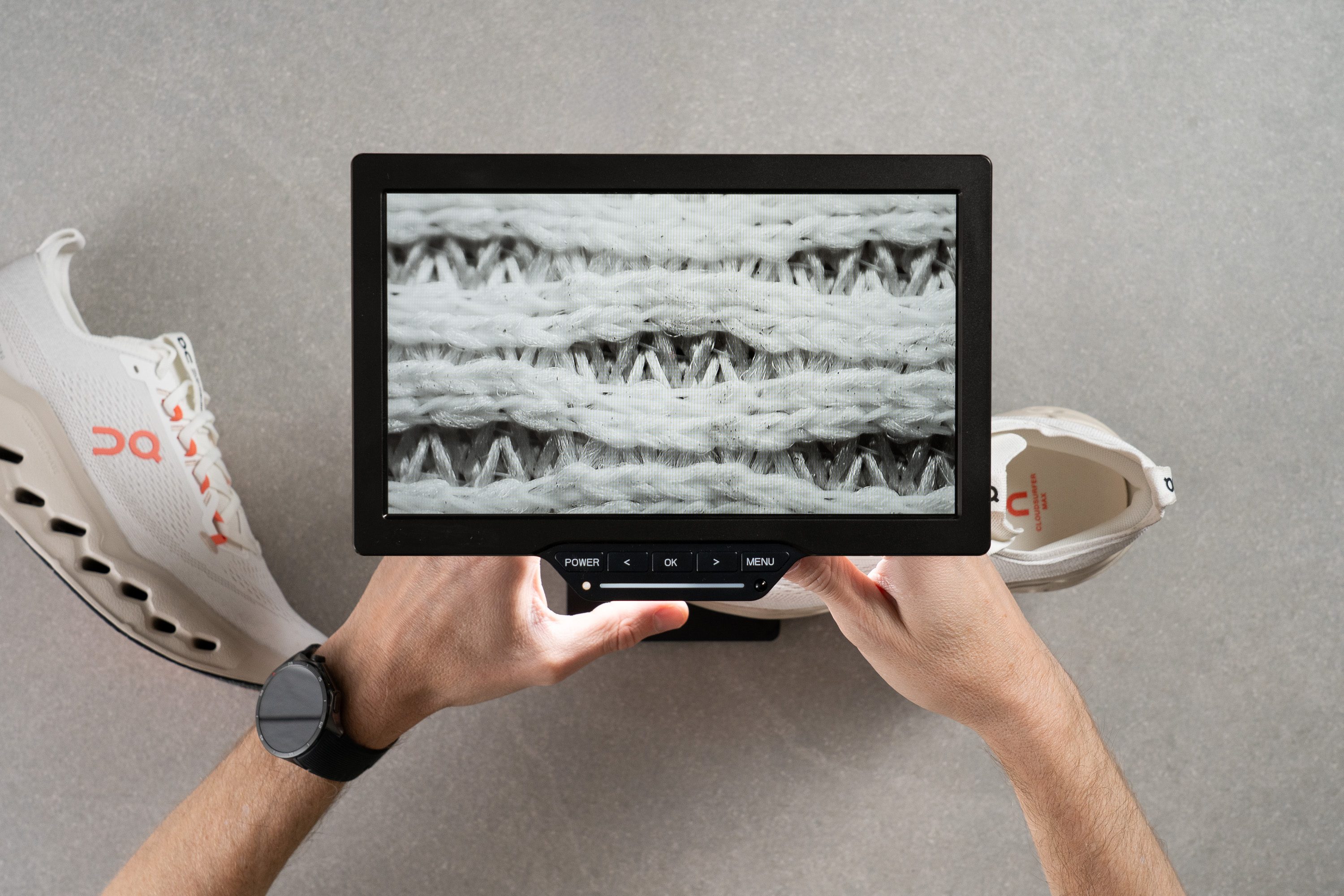
When we examined the upper under the microscope, we found that On’s engineered mesh delivers solid craftsmanship and a pleasant soft-to-touch feel.
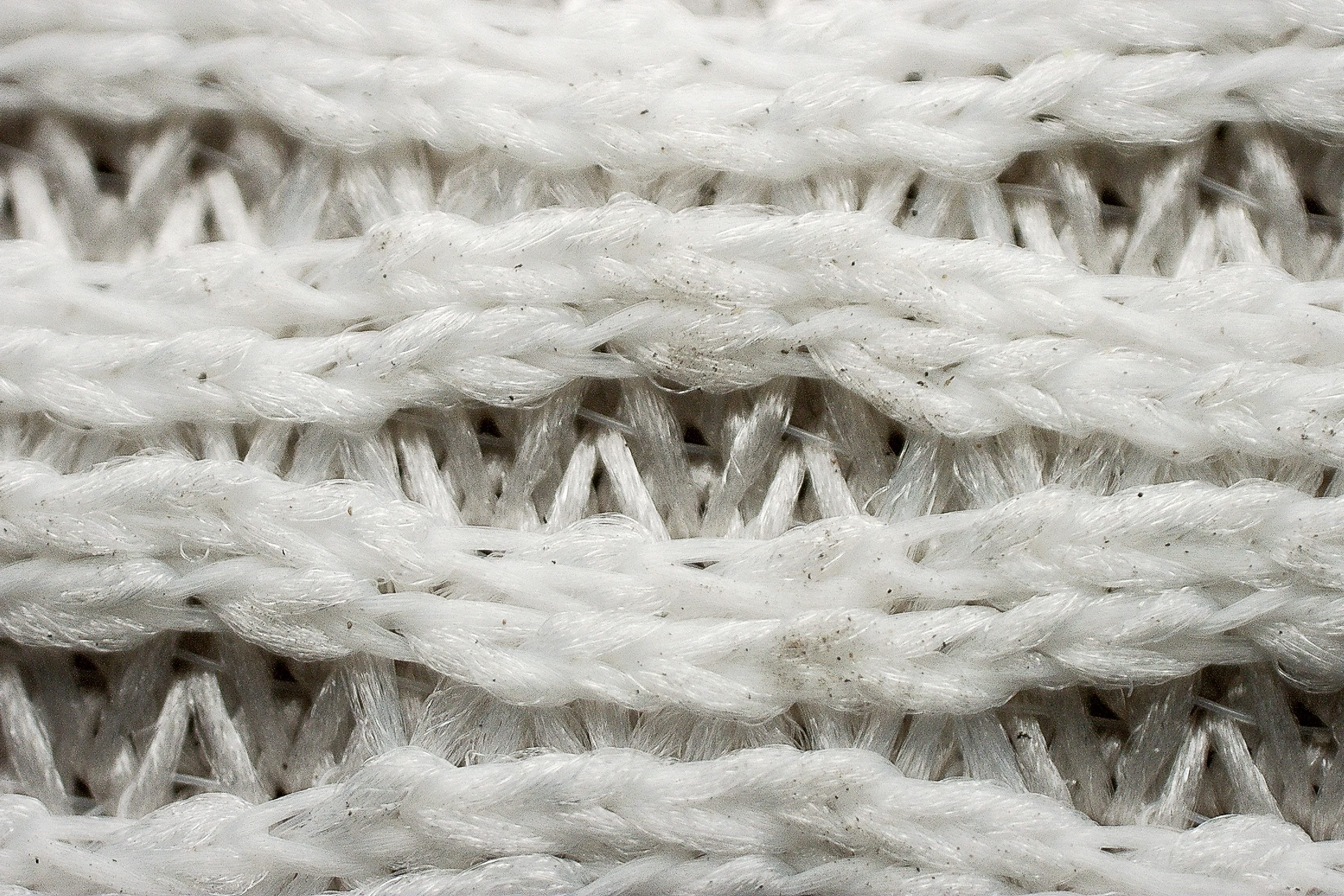
However, the ventilation holes are mostly sealed, limiting airflow despite the material’s good quality.
That said, if you don’t plan to run in warm weather or live in a mild-to-cool climate, this won’t be a problem at all. For those conditions, the shoe remains perfectly comfortable for daily use.
| Cloudsurfer Max | 2 |
| Average | 3.7 |
Stability
Lateral stability test
A signature trait of On shoes is their stable feel despite a relatively narrow platform, creating a unique blend of agility and support without feeling clumsy.
We found that, in the Cloudsurfer Max, this stability comes from the raised midsole sidewalls, the firmer foam, and the upper reinforcements that effectively control lateral movement.
Torsional rigidity
Torsional rigidity remains relatively low (3/5), which is impressive given the higher stack height. This flexibility is mainly due to the central hollow we previously discussed in the outsole design section.
| Cloudsurfer Max | 3 |
| Average | 3.5 |
Heel counter stiffness
The heel counter delivers impressive comfort, scoring another 3/5 for its flexibility and generous collar padding.
Oh, and this collar design with internal padding is different from most running shoes, and based on feedback, it works wonderfully for some runners but may cause slight heel slippage for others, so definitely something to keep in mind.
| Cloudsurfer Max | 3 |
| Average | 2.9 |
Midsole width - forefoot
Even with the increased forefoot stack height in the Cloudsurfer Max, the shoe maintains a balanced width of 115.5 mm.
This aligns perfectly with On’s usual design approach and expectations for the brand, while also setting it apart from wider max-stack competitors, a detail we truly appreciate.
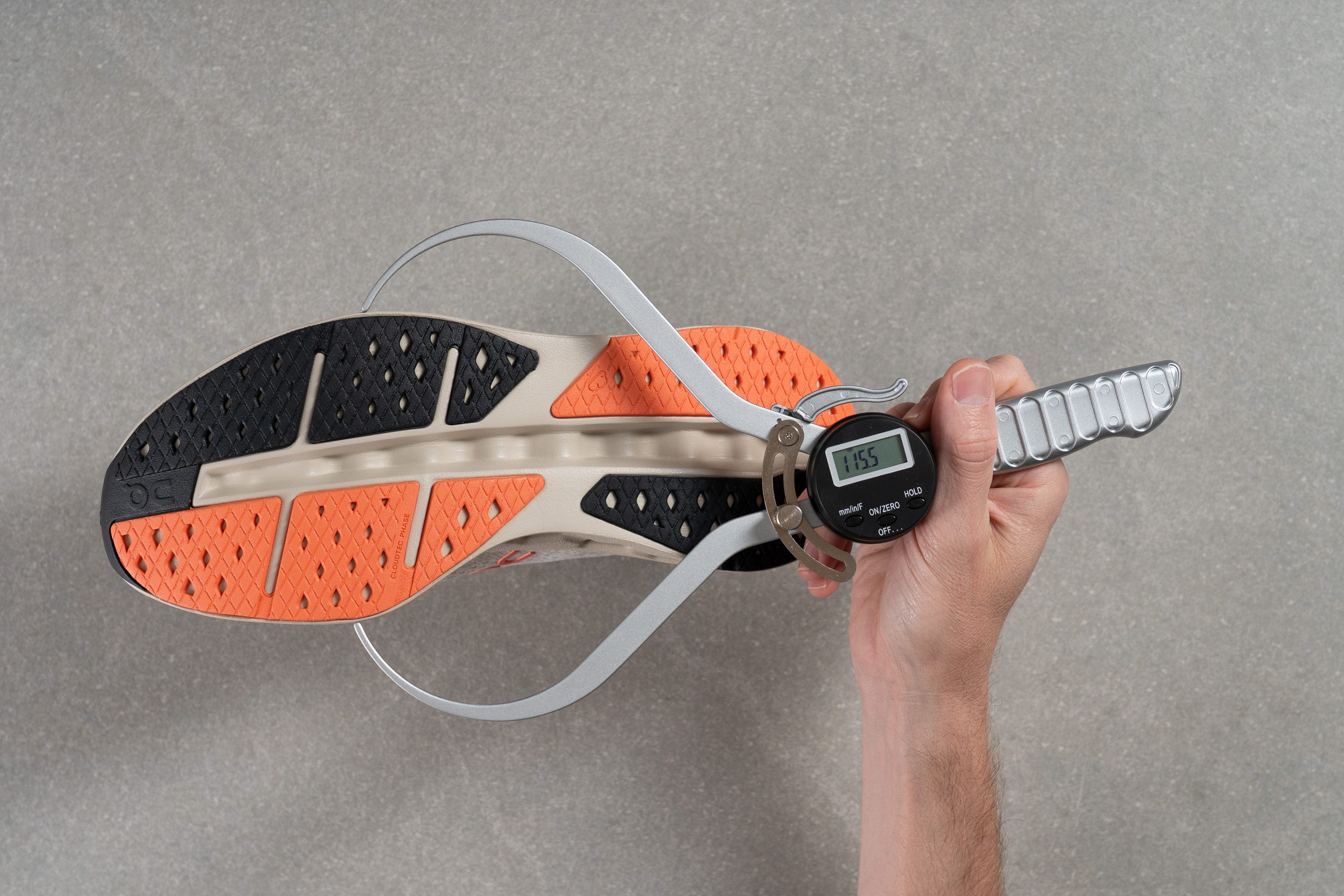
| Cloudsurfer Max | 115.5 mm |
| Average | 114.3 mm |
Midsole width - heel
The heel is where On made a clear change from the regular Cloudsurfer series, expanding it to 95.0 mm, while the lower-stacked version measured below our lab’s average. Combined with the added rubber in the outsole for extra protection, we believe On aimed to make this model more appealing to rearfoot strikers.
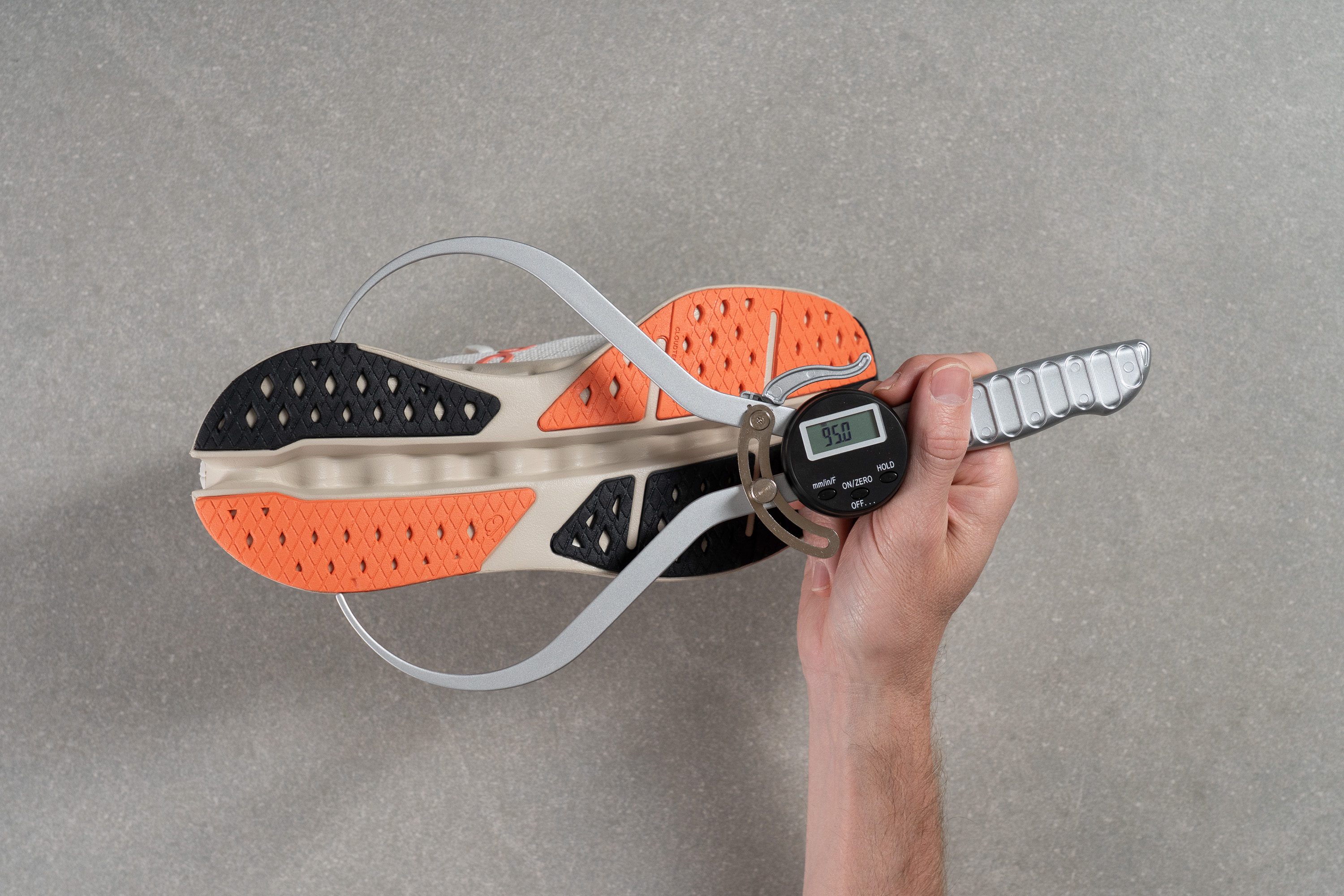
| Cloudsurfer Max | 95.0 mm |
| Average | 90.7 mm |
Durability
Toebox durability
The upper of the Cloudsurfer Max showed limited abrasion resistance in our Dremel test, earning a modest 2/5 score.
| Cloudsurfer Max | 2 |
| Average | 2.6 |
Heel padding durability
The Cloudsurfer Max scored another 2/5 here, and in this case, it’s a bit more concerning than in the toebox—especially for runners who often develop wear holes in this area.
| Cloudsurfer Max | 2 |
| Average | 3.4 |
Outsole durability
After two disappointing durability results, we hoped the outsole would turn things around, and it mostly did. Using our Dremel test at 2N and 10K RPM, we measured 1.0 mm of rubber loss, a solid performance, though not outstanding.
| Cloudsurfer Max | 1.0 mm |
| Average | 1.1 mm |
Outsole thickness
Combined with its good durability result, we expect no issues with outsole wear on the Cloudsurfer Max, as it boasts a robust 3.2 mm rubber thickness.
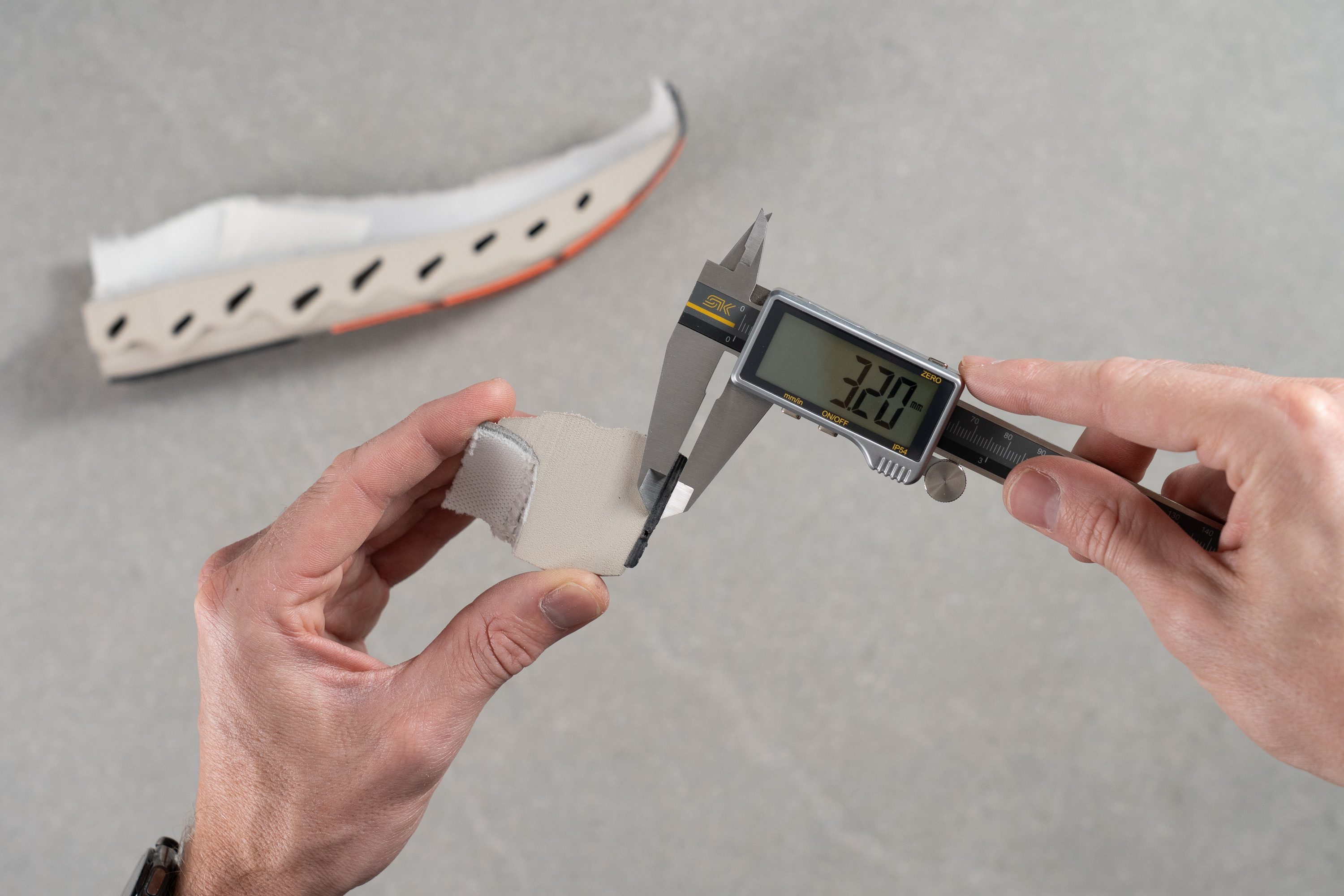
| Cloudsurfer Max | 3.2 mm |
| Average | 3.2 mm |
Misc
Insole thickness
The Cloudsurfer Max features a slim 3.1 mm insole, which surprised us as it’s noticeably thinner than the average we usually measure.
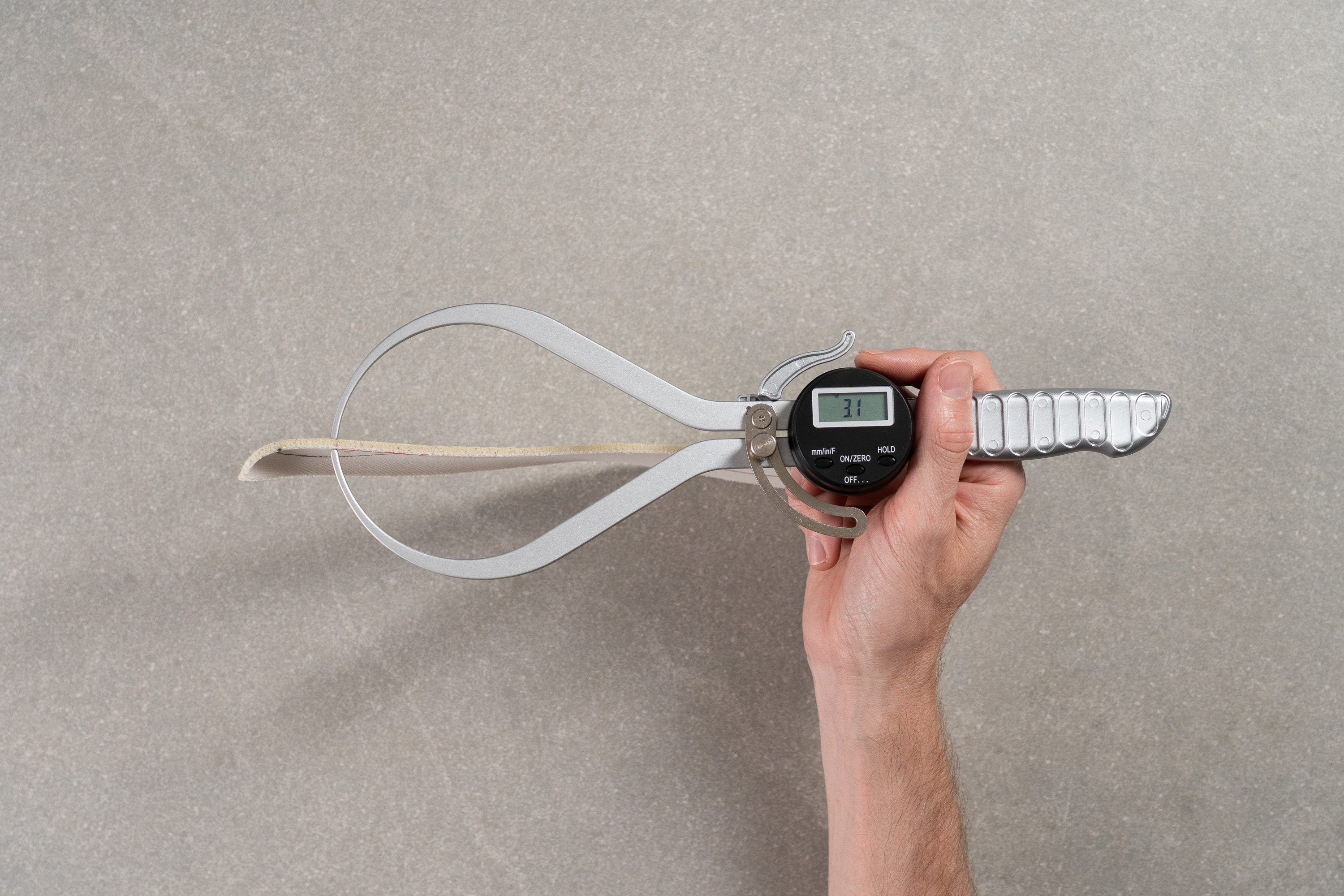
| Cloudsurfer Max | 3.1 mm |
| Average | 4.5 mm |
Removable insole
However, since the insole can be easily removed, you can replace it with a thicker one—if the toebox space allows—and add a few extra millimeters to the stack height, turning it into a true maximalist option.
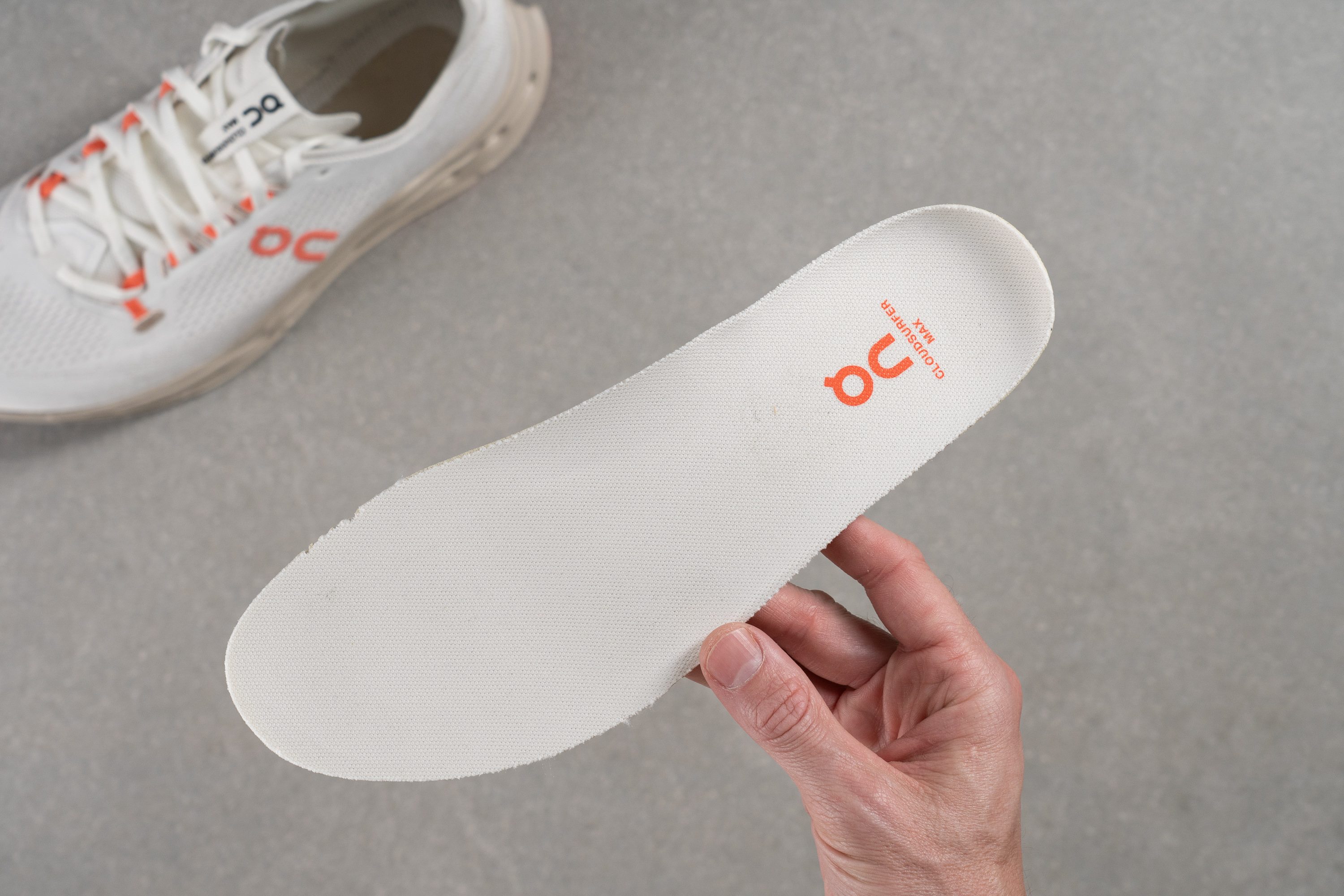
| Cloudsurfer Max | Yes |
Midsole softness in cold (%)
The Helion foam showed a 28% decrease in softness after spending 20 minutes in our freezer. That’s decent for an EVA-based compound, but again, it’s time for On to move toward something more advanced.
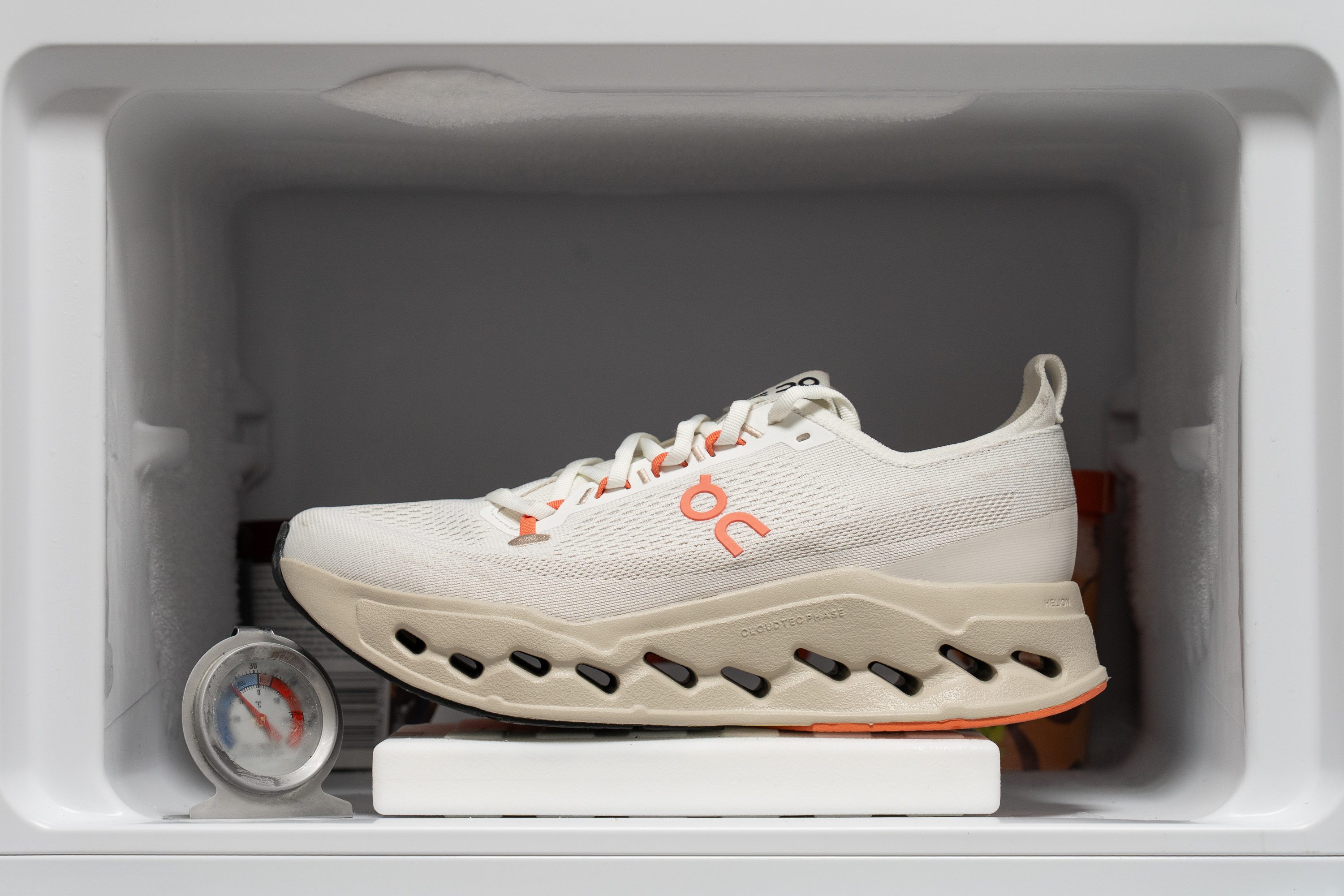
| Cloudsurfer Max | 28% |
| Average | 25% |
Reflective elements
The On Cloudsurfer Max lacks any reflective elements, not even the On logo, which used to feature reflective detailing on previous models from the brand.
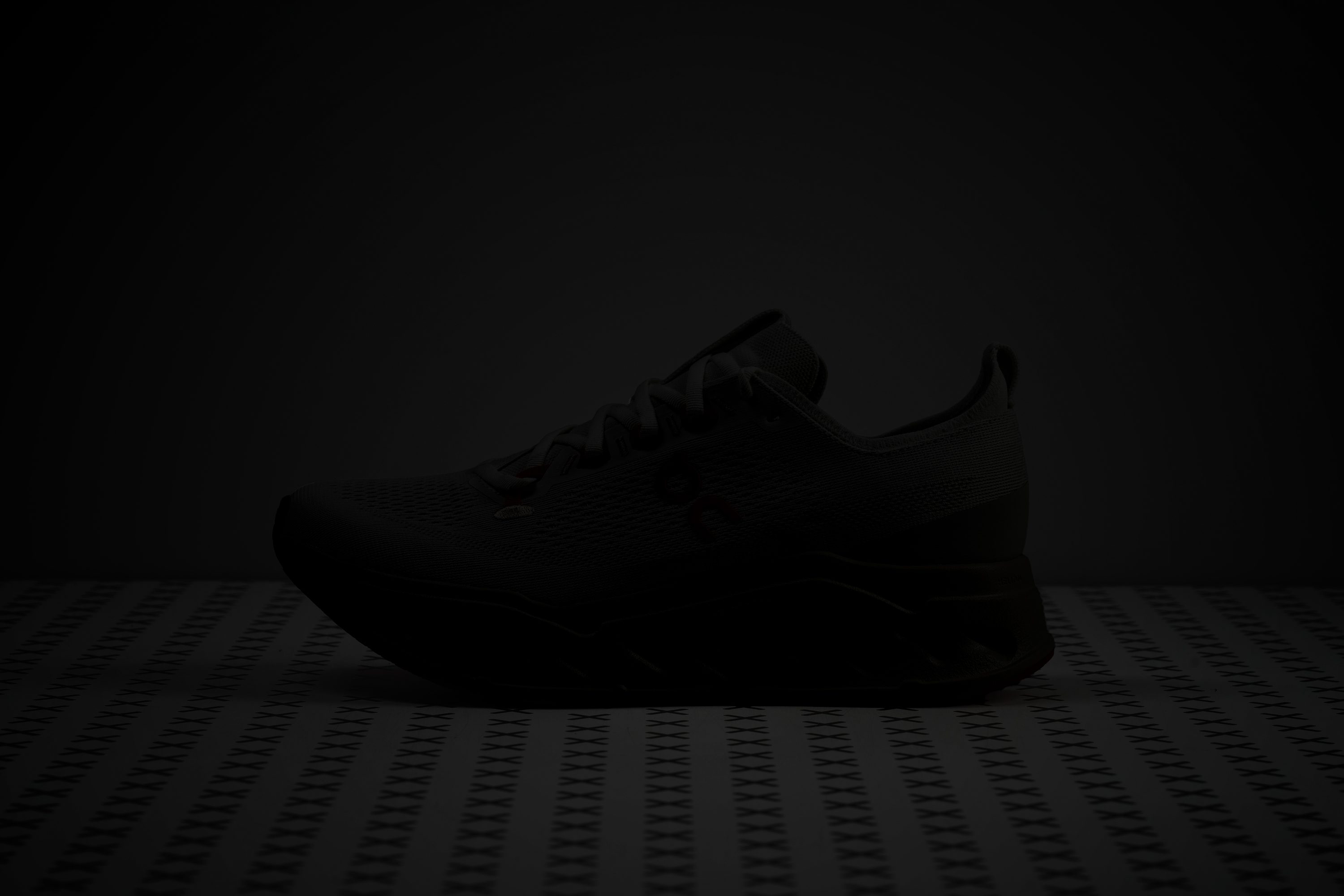
| Cloudsurfer Max | No |
Tongue padding
The Cloudsurfer Max uses a loop-based lacing system where flat laces run through fabric eyelets instead of standard holes. This design allows smoother lace movement and more precise tension control, though it can raise some concerns about long-term durability.
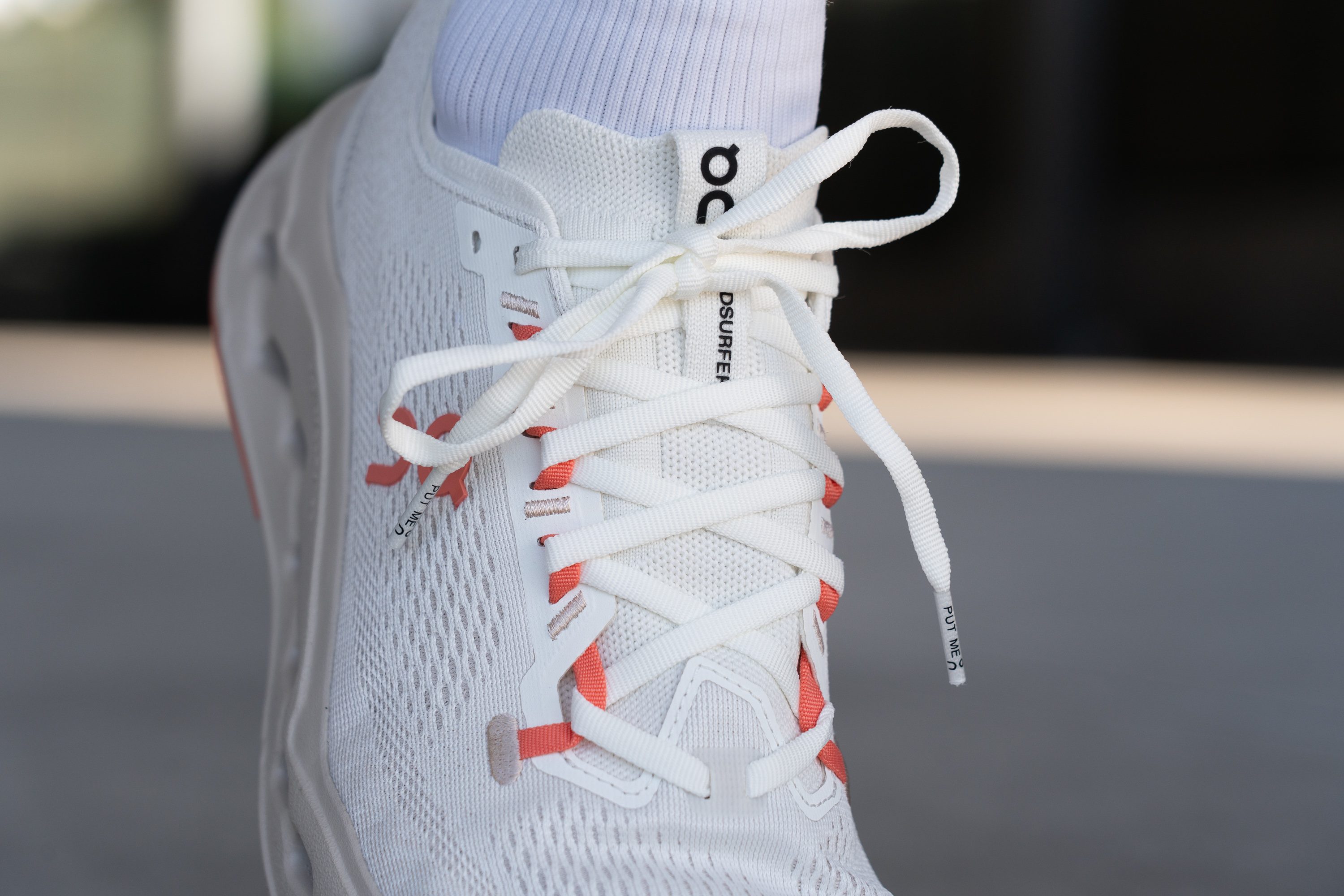
We were surprised to find that the tongue has just 1.5 mm of padding, because that's less than expected given the shoe’s higher weight. However, as we said, the new loop eyelets help distribute pressure much better, preventing discomfort on the top of the foot.
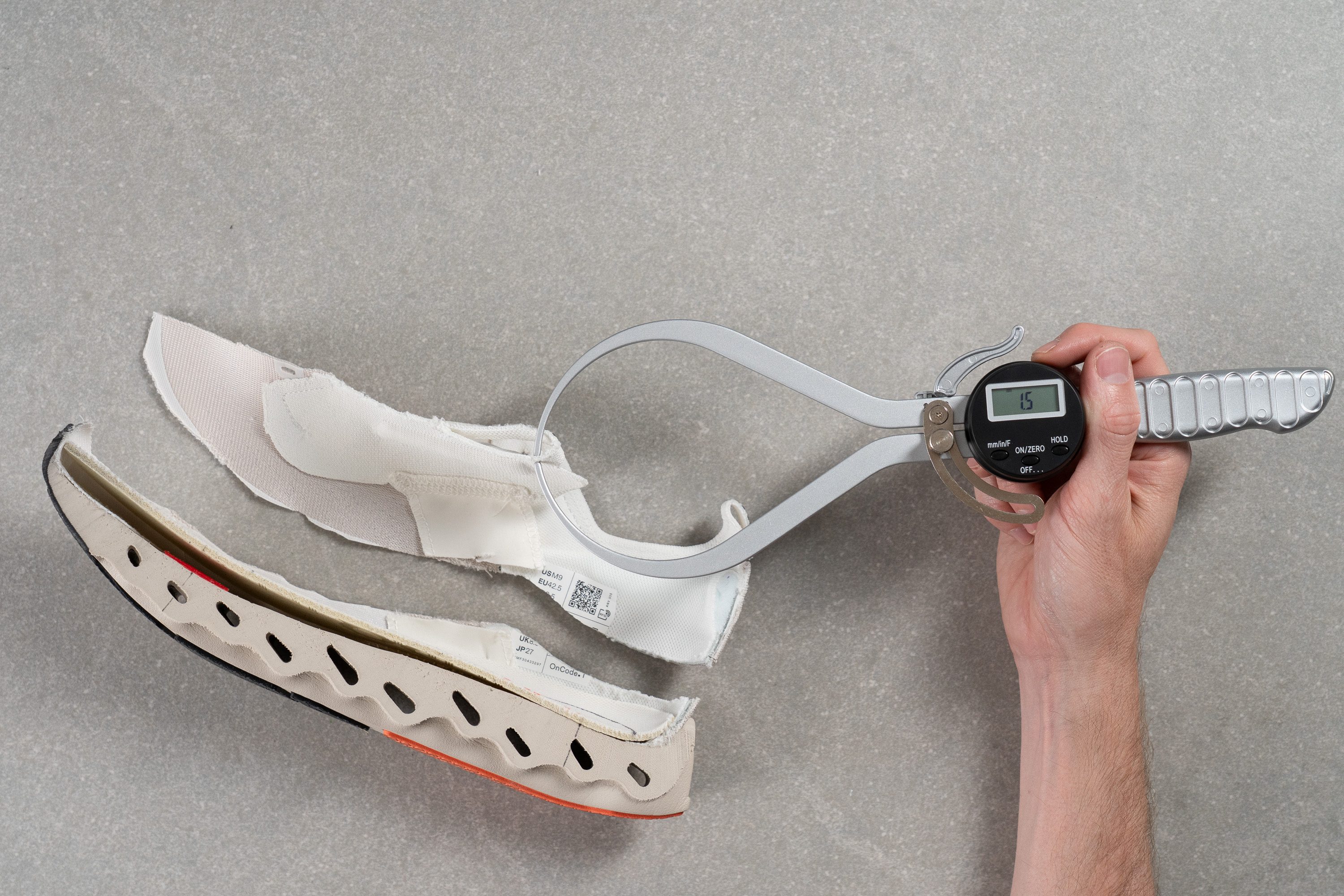
| Cloudsurfer Max | 1.5 mm |
| Average | 5.8 mm |
Tongue: gusset type
We appreciated that the tongue is semi-gusseted, enhancing lockdown and giving the secure fit expected from a premium-priced shoe. It’s nice to see On not cutting corners here, unlike some other brands.
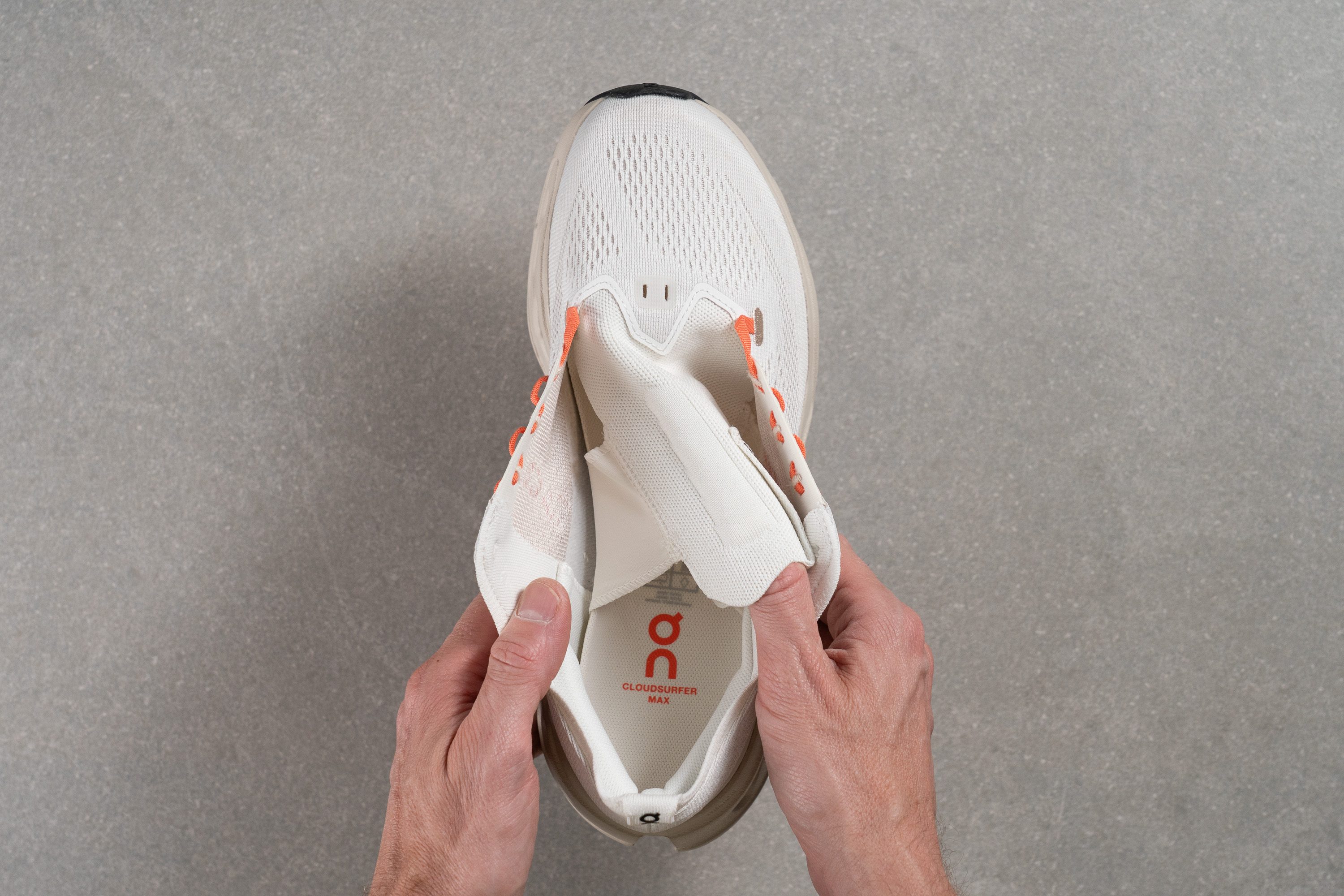
| Cloudsurfer Max | Both sides (semi) |
Price
Like most On models, the Cloudsurfer Max carries a slight premium over mainstream brands. That wouldn’t be an issue if its performance matched the price... but it doesn’t. We believe that the shoe lacks energy return and needs a more responsive foam to justify the cost.
Still, for runners prioritising design and a comfort-driven upper over pure performance, it may be worth considering.
| Cloudsurfer Max | $180 |
Heel tab
The heel tab features a design similar to recent ASICS models like the Nimbus 27, seamlessly integrated into the collar for a clean look.
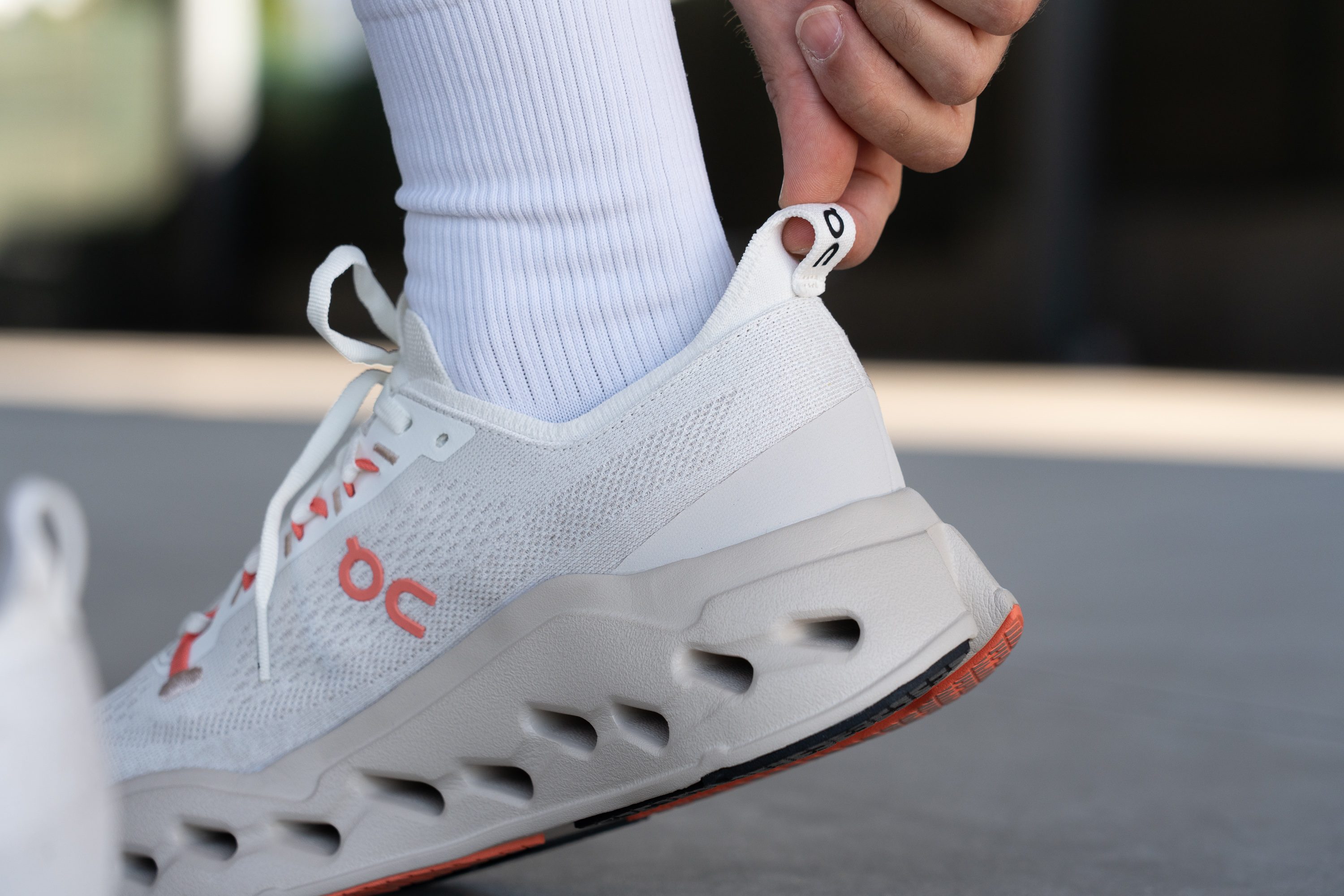
| Cloudsurfer Max | Finger loop |

